
The STaTe of organic Seed foreST aSSiSTed MigraTion TranSiTion SupporT group Centering Farmer VoiCes and solutions in the Farm Bill
WHO WE ARE
Marbleseed, formerly known as MOSES, is a nonprofit committed to supporting the Midwest’s organic and sustainable farmers through farmer-led events and educational resources that help your farm grow.
ORGANIC BROADCASTER CONTRIBUTORS
Editor: Alexandria Baker
Graphic Designer: Hannah Miller & Jo Facklam
Advertising Coordinator: Jenica Caudill & Jo Facklam
Digital Content Producer: Jo Facklam
The Organic Broadcaster is a bimonthly magazine published by Marbleseed. Opinions expressed by the authors do not necessarily reflect those of the publisher. Inclusion of an advertisement does not imply endorsement of a product. Content may be reprinted with permission.
Content Submissions: organicbroadcaster@marbleseed.org
Display Advertising: advertising@marbleseed.org
Classified Advertising: classifieds@marbleseed.org
Subscription: Manage your subscription by emailing info@marbleseed.org
COVER PHOTO: Second Glance Farms Bagley, Minn.
conTenT IN
FEATURE
The End of Organic (As We Know It)
Working Together to Address Farmer Well Being and Mental Health
Inside Organics: Transition Support Group
Ask a Specialist: How can I convince my partner, family member, or neighbor to switch to organic practices in their fruit trees?
EVERY ISSUE
OUR TEAM
Lori Stern, Executive Director
Alexandria Baker, Communications & Development Manager
Sarah Broadfoot, Operations Director
Jenica Caudill, Director of Development & Strategic Partnerships
Marguerite Rapp, Operations & Events Coordinator
Stephanie Coffman, Presentation Coordinator
Tom Manley, Program Director
Jo Facklam, Communications Coordinator
Hannah Miller, Graphic Designer
Victoria Ostenso, Farmer Network Specialist
Sarah Woutat, Farmer Advancement Program Coordinator
On-Farm Organic Specialist Team
OUR BOARD OF DIRECTORS
Katie Bishop, PrairiErth Farm, Ill.
Dela Ends, Scotch Hill Farm, Wis.
Clare Hintz, Elsewhere Farm, Wis.
Charlie Johnson, Johnson Farms, S.D. David Perkins, Vermont Valley Farm, Wis.
Sara Tedeschi, Dog Hollow Farm, Wis.
Darin Von Ruden, Von Ruden Family Farm, Wis.
THIS ISSUE
04
10
12
14
16
18
22
24
26
28
32
Centering Farmer Voices and Solutions in the Farm Bill ARTICLES
Grant Program Aids Local Foods Effort
State of Organic Seed
Forest Assisted Migration
Book Review: Healing Grounds
Explaining the Organic Transition Intiative
Organic & Specialty Crop Insurance Updates from the USDA RMA
03
34
36
38
Letter from the Executive Director
News Briefs
Community Calendar
Classifieds
Fall is the time of harvest and for many of us a time of celebration as we wind down a season of hard work. The days are shorter and it is as if even the sun is saying it is time for more rest. Autumn is also a time for reflection, when the lessons of the farm are still with us. We jot more notes, calculate costs of seed, feed, and labor against yields and sales. For livestock farmers, harvest is also a time of loss. In the dark, cold mornings and evenings of chore time before butcher dates I remember sadness mixed with gratitude. We gave our animals a great life on pasture, and under the cover of trees, and would often repeat, ‘with just one bad day.’
This past October we had a fundraising brunch at my former restaurant Cow & Quince, in New Glarus, Wis. It was an opportunity for real closure with some of our customers who have missed us and our food since we closed due to the pandemic. In four courses I had the joy of bringing my family back into the kitchen with me. My daughter and two sons-in-law were there at the inception of Cow & Quince and created the magic with me that became the awardwinning, locally sourced destination restaurant. We had not cooked together in that kitchen for over four years.
I have been Executive Director at Marbleseed for two years now. I love that I was able to bring these worlds together; Marbleseed and Cow & Quince. As always, there were farmers alongside eaters in the room. I was able to talk about the community building and food connection that inspired me to open the restaurant in a small, rural place where food comes from. And folks got to hear from amazing organic farmers, Marbleseed board members among them. I was also able to express my thanks, appreciation and love for my family that went on this restaurant journey with me. We have all left that experience with deep learnings about seasonality, leadership, and being part of something bigger than the food on the plate.
Fall is also a spiritual practice. For me it is the time of new year and taking stock. Of assessing where I have fallen short and how I can do better in the year to come. The brunch experience inspired me to find new collaborations and partnerships that would bring Marbleseed’s work and the importance of supporting local, organic farms to eaters that are surprised by the bounty of Wisconsin’s short growing season. And after two years with the organization and contributing to national coalitions, I want to deepen Marbleseed’s relationships with federal and state agricultural agency staff as well, bringing farmer perspectives to programmatic work and new collaborations.
Shortly after you read this issue, we will be opening registration for our 34th annual organic farming conference in La Crosse. We are looking forward to a ‘post pandemic’ gathering with new opportunities for engagement and farmer to farmer learning. Building upon the longstanding tradition and desire of farmers to learn from each other is another area of focus for this upcoming year.
Our team is growing and I am excited by the new projects we are starting. All align with Marbleseed’s mission and focus on a food and farming system that is equitable, sustainable and creates a livelihood for farmers. See the article on page 10 about the Local Food Purchasing Assistance work happening in Wisconsin. We are working with other partners across the food chain, but our task is to work with farmers as the first step in addressing hunger and food insecurity in communities with greatest need.
Concerns about the climate continue to loom large and I am committed to ensuring that organic systems are held up as stewardship and examples of reciprocity and regeneration with the land, animals and water. I will work to find our place to increase conservation practices and transitions to organic production in partnership with others that share our values.
In true harvest custom, this fall has been a time of opportunity along with a sense of great responsibility. I am thankful that we are busy, humbled that we are seen by partners to have a critical role in creating a better food and farming system, and grateful for the team and board at Marbleseed who are also deeply committed to making a difference.
To health, happiness, and always enough,
 Lori Stern, Executive Director
Lori Stern, Executive Director
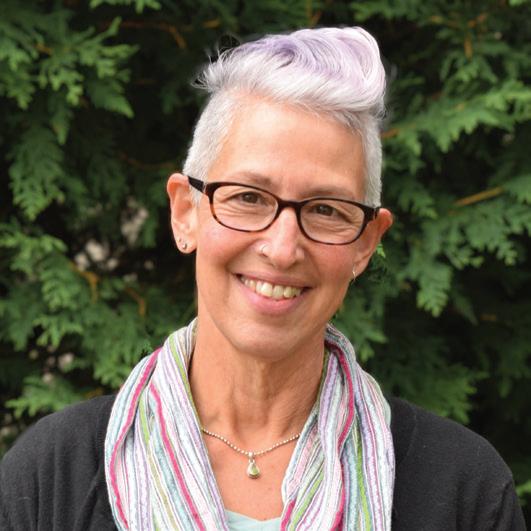
FEATURE
CENTERING FARMER VOICES AND SOLUTIONS IN THE FARM BILL:
National Organic Coalition, National Sustainable Agriculture Coalition, Organic Farmers Association, and National Young Farmers Coalition consider the 2023 Farm Bill
NATIONAL ORGANIC COALITION
Written by Abby Youngblood
The Farm Bill is the primary agriculture and food policy legislation of the federal government. This omnibus bill is negotiated approx imately every five years and deals with agriculture, food assistance programs, and other aspects under the U.S. Department of Agriculture, including many organic programs.
In the 2018 Farm Bill, the National Organic Coalition (NOC) and our al lies achieved major wins for organic including a historic boost in funding for organic research, the passage of provisions to enhance enforcement and prevent fraud in organic sup ply chains, and reauthorization of the organic certification cost share program, which provides a partial reimbursement for certification costs and is especially important for smaller operations and underserved producers.
In the 2023 Farm Bill, NOC seeks to significantly increase support for current organic producers and those seeking to transition to organic, and to advance organic integrity. Some of our topline priorities include:
GROWING ORGANIC FOOD SYSTEMS
BY pROVIDING A SUITE OF FLExIBLE, EASY TO ACCESS TOOLS TO SUppORT ORGANIC FARMERS AND pRODUC
ERS WHO WANT TO TRANSITION TO ORGANIC
NOC is recommending that USDA reimburse organic producers $1,500 annually per operation per scope, with flexibility to exceed that limit to address barriers to certification for underserved producers and regions. Certification costs are increasing, and they remain a real barrier for small and socially disadvantaged farmers. We are also looking to build off the USDA’s recently announced Organic Transition Initiative to cre ate a new program with permanent status that will provide funds to qualified nonprofit organizations to help farmers transition to organic, using mentor-to-mentor training programs and other avenues. Some regions of the country are under served and there are few nonprofit organizations and extension agents providing technical information about organic farming systems –we are seeking to change that by increasing resources for organic technical assistance at universities, tribal institutions, extension pro grams, and nonprofits, especially in underserved regions.
STRENGTHENING ORGANIC INTEGRITY
BY ENSURING CONTINUOUS IMpROVE MENT OF USDA ORGANIC STANDARDS
Organic is a voluntary program that depends on continuous improvement, high standards, and regular updates to the organic regulations to meet consumer expectations and achieve success in the marketplace. One of the major frustrations of the organic community has been how long it takes to update and make improvements to the organic standards, even when the organic community and the National Organic Standards Board (the USDA advisory board that makes recom mendations on organic standards and National List materials) are united in recommending changes.
To minimize the many bottlenecks associated with the rulemaking process, NOC is recommending Farm Bill language to set required timeframes for updating organic standards based on input from the National Organic Standards Board (NOSB) and to estab lish dedicated organic staff positions at USDA’s Office of General Counsel (OGC) to work on National Organic Program (NOP) rules to move organic rules forward more quickly.
ExpANDING ORGANIC RESEARCH TO DEVELOp NEW TOOLS TO ADDRESS pRODUCTION, MARkETING, AND ENVI RONMENTAL CHALLENGES
Research is key to tackling the many challenges facing organic farmers. As was true in the last Farm Bill, a high priority should be placed on increased funding for organic research, to keep pace with the growing organic sector. This should include increased funding for the Organic Agriculture Research and Extension Initiative (OREI) to $100 million by end of the 2023 Farm Bill, increased investments in organic research at USDA Agricultural Research Service (ARS) stations, and $50 million in dedicated funding for regionally adapted seeds and animal breeds that perform well in organic systems and changing climates.
STRENGTHENING USDA CONSERVATION pROGRAMS FOR ORGANIC FARMERS
Farmers and handlers who voluntarily choose organic certification agree to

organic B roadca ST er | 4
meet strict standards. For example, to become certified as organic, farmers must have an Organic System Plan (OSP) that includes detailed plans for how the farmer will, “maintain and improve their natural resources and integrate cultural, biological, and mechanical practices that foster cycling of nutrients, promote ecological bal ance, and conserve biological diversity.”
USDA organic standards also require organic farmers to use farming practices such as crop rotations, cover cropping, and managed grazing for livestock, all of which have proven benefits for soil health and climate change mitigation. Despite the strong conservation require ments that underlie USDA organic standards, USDA Conservation Programs are not well tailored to organic farmers. NOC’s recommendations for the Conservation Title of the Farm Bill are intended to establish equity for organic farmers participating in USDA Conservation Programs and to help more organic producers access programs in recognition of their climate-smart and ecologically beneficial farming practices.
Given the cross-cutting benefits of organic agriculture throughout our food and fiber system, NOC will also be making additional recommendations related to com modity, nutrition, energy, and crop insurance programs in the Farm Bill.
NOC recognizes that access to the organic certification has not been equal across all communities and groups. NOC is committed to listen and amplify the work of frontline organizations that advocate for policy initia tives to advance equity and justice, including increas ing access to land, capital, and technical assistance for Hispanic, BIPOC, and underfunded, underrepresented or historically excluded communities.
Finally, NOC will be guarding against any provisions in the 2023 Farm Bill that damage the integrity of the organic program or weaken the organic standards.
You can learn more about NOC’s 2023 Farm Bill plat form on our website: https://www.nationalorganiccoalition.org/farm-bill
Since 2015, Abby Youngblood has served as the Executive Director at the National Organic Coalition. Abby has been a passionate participant in the organic farming and food justice movement for more than two decades.
work together to collectively advocate for policy reform that advances a more environmentally sustainable, eco nomically viable, and socially just food and farm system.
One of the first ways NSAC begins working on the Farm Bill is through the collaborative development and consensus-driven approval of a policy platform. NSAC’s policy platform serves as an organizing and advocacy tool, and the proposals it contains for the 2023 Farm Bill fall within the following key priorities:
• Strengthening resilient local and regional food sys tems;
• Fixing a flawed farm safety net and restoring fair competition;
• Fighting climate change and building equity through research investments; and
• Advancing land stewardship and climate resilience through comprehensive conservation reform.
Woven throughout all of these priorities is the need for the Farm Bill to:
• Advance racial equity, including by improving equi table access for underserved individuals and com munities – particularly Black, Indigenous, and people of color (BIPOC) – to USDA funding and programs, enhancing program analysis and data collection to inform racial equity-driven decision-making, and increasing funding for programs and policies that support underserved individuals and communities;
• Invest in rural economic prosperity by expanding ac cess to capital for small businesses, supporting pro ducers to create and expand value-added products and enterprises, and tackling consolidation through the promotion of fair competition, investments in the next generation of farmers and ranchers, and increased funding for local and regional food sys tems; and
• Build a climate-resilient future by investing in programs with the longest successful track record of addressing on-farm stewardship – namely, the Farm Bill’s conservation, research, renewable energy, and rural development programs – as the primary strategy to advance and scale up climate beneficial farming practices, accounting for the disproportion ate impacts of climate change on socially vulnerable populations.
Policymaking doesn’t happen in a vacuum, and the years since the 2018 Farm Bill was signed into law have been among the most tumultuous in our nation’s history. An increasingly disruptive and changing climate, impacts of the COVID-19 pandemic, and a long-overdue racial justice reckoning have thoroughly unveiled the fragility of our current food system.
Written by National Sustainable Agriculture Coalition Staff
The National Sustainable Agriculture Coalition (NSAC) is an alliance of 130+ food and farm organizations around the United States that work directly with farmers and other key food system stakeholders. NSAC’s members
Far from being abstract and distant impacts, these events are affecting the daily lives and livelihoods of farmers, ranchers, and communities – both urban and rural – across the country. The loss and degradation of soil health, freshwater resources, and biodiversity—along
M ar BL e S eed. org | 5
NATIONAL SUSTAINABLE AGRICULTURE COALITION
with extreme weather events like droughts and floods—increasing ly threaten our food supply. The fragility of our supply chains and workforces, made even more vul nerable during the pandemic and further tested by ongoing global conflicts, serves as a stark reminder of how quickly food access can be jeopardized. Moreover, the national conversation about racial justice has laid bare how agriculture— par ticularly the pursuit of sustainable agriculture—is rife with obstacles for BIPOC, including immigrants, migrants, and refugees.
Amidst all this, other trends within our food system have continued virtually unabated. Throughout the past century, farms in the United States have grown in size and dwin dled in number while the average age of the U.S. farmer – now 57.5 according to the most recent Cen sus of Agriculture – has continued to rise. Consequently, just as most people who manage U.S. agriculture are on the brink of retirement, the decades-long trend of farmland consolidation that is silently en dorsed by federal policy has created tremendous barriers for new and beginning farmers. These barriers include the limited availability of affordable and desirable farmland, challenges in acquiring start-up cap ital and financing, and inadequate access to hands-on training and risk management tools – at a time when we need them most.
The challenges facing our food system, and the initial steps taken in recent years to address them, light a path for the 2023 Farm Bill. At this critical moment in our nation’s history, we must collectively work to address the challenges that have plagued our nation’s conscience, health, environment, and commu nities for too long. The 2023 Farm Bill should leverage the power of our nation’s food and agricultural system to seek solutions that ensure America is resilient and healthy for generations to come.
To read more about NSAC’s plat form for the 2023 Farm Bill, visit
https://sustainableagriculture.net/ publications/
ORGANIC FARMERS ASSOCIATION
Written by the Organic Farmers Asso ciation Staff
Organic Farmers Association (OFA) will focus advocacy efforts during the 2023 Farm Bill development on programs that support organic farmers and improve organic integ rity. To enhance impact on the Farm Bill beyond organic-farmer-specific issues, OFA will partner with al lied organizations to help fight for broader improvements we want to see. Issues we champion include support for local food system infra structure, addressing longstanding problems of discrimination in USDA programs and improving competi tion in agriculture markets.
The midterm elections will inform OFA’s strategy and specific pro posals in preparation for the new Congress, when the Farm Bill debate will begin in earnest. Election results will not change our priority issues but may inform the choices and strategy we use based on the new composition of the House and Sen ate Agriculture Committees, where the bulk of the bill will be drafted. Organic Farmers Association will always advocate for USDA to improve how the National Organic Program operates, much of which they can already do without changing the law. Many of the priorities identi fied by organic farmers are changes that USDA could make now, without using the Farm Bill process to alter the text of the Organic Foods Production Act that created the USDA Organic program. Wherever they can make changes outside the political farm bill process, we will continue to push for USDA to make those administrative improvements.
OFA’s farm bill priorities will con tinue to evolve as we get closer to the 2023 Farm Bill. The overarching priorities are below, for more detail
on these priorities visit OrganicFarmersAssociation.org.
ORGANIC INTEGRITY
• Continuous improvement in organic
• Require The National Organic Program (NOP) to periodically review and update organic practice standards.
• Set a timeframe for the NOP to do rulemaking after receiving NOSB recommendations.
• Authorize funding for the NOP to keep pace with organic industry growth and direct specific resources towards standards development.
• Oversight and enforcement
• Require the NOP to accredit third-party material review organizations.
• Grant the NOP the authority to take enforcement actions against false organic claims on agricultural non-food products.
• National organics standards board
• Allow USDA to expand the definition of reimbursable expenses for NOSB farmer members to cover substitute labor on their operations during their Board service.
• Restore the previous NOSB procedure for sunset review of National List materials, to require a 2/3 vote to re-list a material.
MAkING USDA pROGRAMS WORk FOR ORGANIC FARMERS
• Cost share/support for new organic farmers.
• Expand the Organic Certifi cation Cost Share Program to $1500/scope, streamline program, and cover some transition costs.
• Support transition to organic through grants to organiza tions (outside of USDA or the land grant university sys tem) for technical assistance including farmer-to-farmer learning and mentoring, financial planning assistance, outreach to under-represent
organic B roadca ST er | 6
ed groups and support for translation of training materials and organic certification paperwork.
• Crop insurance
• Instruct USDA to increase education of Risk Man agement Agency staff and crop insurance agents on organic production methods.
• Streamline WFRP insurance applications and program.
• Credit
• Increase the loan limit for USDA Micro Loan pro gram to $100,000.
ASSISTANCE FOR ORGANIC DAIRY FARMERS
Organic dairy farmers across the country are facing severe economic challenges. The NOP can increase enforcement of the organic standards (including access to pasture and the updated Origin of Livestock rule) with no changes to the Farm Bill. In addition, the next Farm Bill could provide long-needed support for the organic dairy market, similar to what conventional dairy has received for many years.
CLIMATE AND CONSERVATION
• Organic must be prioritized in climate programs developed for agriculture in the Farm Bill.
• Environmental Quality Incentives Program (EQIP): target funds for livestock practices to advanced grazing management and match organic payment
limit to conventional payment limit
• Expand Conservation Stewardship Program (CSP) practices specific to organic or transitioning produc tion.
• The Natural Resources Conservation Service (NRCS) should quantify the multiple benefits of organic practices beyond carbon sequestration.
ORGANIC RESEARCH
Investing in organic research has significant benefits that serve more than just organic farmers. Organic research should prioritize helping organic farmers adapt to climate disruption, quantify the multiple benefits of or ganic production for the environment and public health, develop regionally appropriate, publicly available seeds and breeds, and address organic production challenges with methods that reduce the need for inputs. Increase of funding across ARS, OREI, SARE, ODI, and ERS for organic research.
INCREASING ORGANIC INFRASTRUCTURE
• Create a new regional program to provide grants direct to farms for increasing organic production, addressing challenges for climate and supply chain resilience, and strengthening local food systems.

• Increase funding for the Local Agriculture Market Program (LAMP).
• Provide additional incentives for processing plants
M ar BL e S eed. org | 7 800.352.5247 | ALSEED.COM Corn & Soybeans • Cover Crops • Forages • Small Grains • Conservation • Lawn
We are excited to announce that Albert Lea Seed has purchased Blue River Organic Seed. Over the next two years, we will be integrating the Viking & Blue River brands into one combined national organic seed brand. Visit alseed.com to learn more.
Organic seed for the whole farm, from people committed to organic agriculture.
that receive federal investment (new or expanding) to achieve organic certification.
• Require that USDA establish organic purchasing targets or set asides for purchases of foods from independent regional organic producers.
WORkING WITH ALLIES TO BUILD A BETTER FOOD SYSTEM
• Protect SNAP.
• Increasing land access to young, beginning, and BIPOC/socially disadvantaged farmers.
• Country-of-Origin labeling (COOL).
• Increasing competition in live stock markets.
NATIONAL YOUNG FARMERS COALITION
Compiled from National Young Farm ers Coalition’s policy positions.
Access to land is the number one challenge facing the next genera tion of farmers in the United States. Our nation must take action now to facilitate secure, affordable access to land for farmers who are young, Black, Indigenous, and other people of color— there is no time to wait. The 2023 Farm Bill must address the following issue areas:
• Invest in community-led proj ects that create secure, afford able land access opportunities centering BIPOC farmers
• Establish a new initiative to direct funding to community-led land access projects. This USDA funding should be available to a wide variety of entities, such as tribes, municipal ities, non-profits, and cooperatives, with priority for projects led by and benefiting socially disadvantaged and economically distressed farm ers and ranchers.
This new Farm Bill program will be the first to invest in secure, equitable access to land for farmers from the onset. It will also complement the Department’s existing farm pro duction and conservation programs,
making federal dollars available to community-led projects that create equitable land access outcomes and secure access to land for farmers. Specifically, funding may take the form of a long-term forgivable loan that incorporates support for housing, infrastructure, farmer train ing, technical assistance, and land stewardship practices. This funding should be available as a line of credit or grant prior to purchase enabling eligible entities to act quickly in the real estate market.
BRING COORDINATION TO FEDERAL LAND ACCESS INITIATIVES ACROSS AGENCIES AND DEpARTMENTS
• Implement high-level oversight and thought leadership at USDA to ensure there is coordination within the department and across the federal government so that all USDA staff are work ing together to facilitate equita ble land access and transition.
• Establish a new office and coordinating position within the Farm Production and Conservation (FPAC) mission area focused on equitable access to land and centered around the needs of small, beginning, urban, and BIPOC farmers.
• Amend and fund the Commission on Farm Transition estab lished in the 2018 Farm Bill to study land access and transition to inform policy setting that fa cilitates equitable access to land.
• Seat the Tribal Advisory Com mittee authorized in the 2018 Farm Bill.
• Secure the purpose and func tions of the USDA Equity Commission in the farm bill, providing a permanent statu tory grounding and operational framework for the critical longterm work of the Commission.
• Improve access to credit to help young farmers compete in the real estate market.
The ability to access financing is foundational to accessing secure land. Affordable federal sources of financing are crucial but must be de signed to meet farmers’ needs and help them compete in a real estate
market often driven by non-farmer buyers and investors. Federal policy should invest in making pathways to financing more widely accessible and applicable to those who have invested in building their farming skills rather than their net worth.
INVEST IN INCENTIVIzING FARM TRANSITION AND pREVENTING LAND LOSS IN COMMUNITIES OF COLOR
Retiring farmers face legal, financial, health care, and tax considerations that impact their future and that of the land. BIPOC farmers face increased challenges due to systemic discrimination. Federal policies should acknowledge current land stewards’ work and bolster incen tives for aging farmers to transition land to the next generation of farm ers, centering BIPOC growers. Ensure the accessibility and ac countability of USDA programs, centering young BIPOC farmers, and increasing access for the next generation of farmers as a whole Farmers are increasingly using alternative structures to grow food for communities and steward natural resources, yet these farms lack sup port from governmental and finan cial entities designed with for profit family farm businesses in mind.
The 2023 Farm Bill must Ensure USDA land-related programs are accessible to all young, BIPOC farm ers specifically, and next generation farmers as a whole, by accommo dating eligibility for collective, coop erative, and communal non-family entities, and tracking and publicly reporting demographics data on program participants. As stated in President Biden’s Executive Order on Advancing Racial Equity and Support for Underserved. Facilitate voluntary, community-led farmland protection that keeps land in the hands of growers.
Federal funding for farmland pro tection has kept thousands of acres of farmland from being lost to development, but this funding has pri marily benefited existing landown ers. Farmland protection funding should prioritize farmer ownership
organic B roadca ST er | 8
and help keep land at its agricultural value, meaning the price a producer can afford. Programs should expand beyond conservation easements to include funding for long-term leasing, lease-to-own, and other mecha nisms to increase land access opportunity. Easements should be flexible enough to allow farmers to respond to changing environmental and market conditions.


INVEST IN DATA COLLECTION, REpORTING, AND RE SEARCH ON FARMLAND TENURE, OWNERSHIp, AND TRANSITION
Current and comprehensive data is critically important to understanding and responding to the challenges farmers face related to land access and transition. We urge policymakers to ensure the data collection components of the 2018 Farm Bill are fully implemented. We urge Congress to continue to invest in recurring data collection, reporting, and research on farmland tenure, ownership, and transition to better understand the large-scale trends and challenges related to land access for young, BIPOC farmers and the next generation of farmers.
Find more information on the National Young Farmer’s policy positions here: https://tinyurl.com/p5v5v6rn.
Join us for panel discussion on the 2023 Farm Bill at the 34th Marbleseed Organic Farming Conference, this February 2023 in La Crosse, Wisconsin.

M ar BL e S eed. org | 9
Now with FSMA records! COG Pro Organic Certification Simplified Record-keeping made easy. Try it for FREE at www.cog-pro.com Do You Have the Records to Prove It? You Keep Your Produce Safe, but…
Grant Program Aids Local Foods Effort
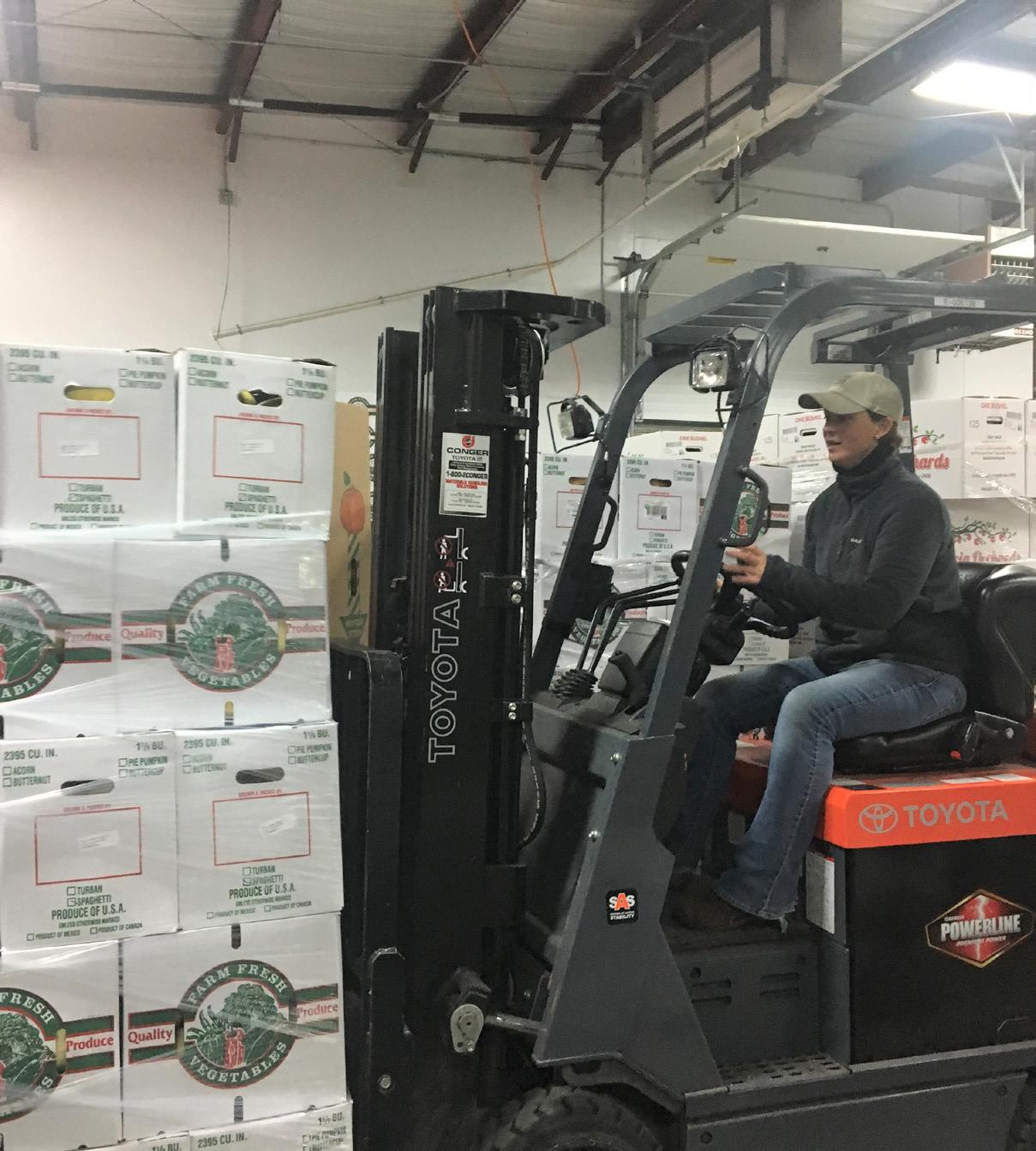 By
By
If one thing became abundantly clear during the pandemic that has plagued the nation and world during the past 2-1/2 years, it’s that the food-distribution system in this country can be extremely fragile.
Sarah Lloyd, Director of Development for the Wisconsin Food Hub Cooperative (WFHC), has been working in the local food distribution realm for more than 10 years, helping build a system that aggregates food from Wisconsin farmers and funnels that food into the marketplace. “Covid exposed to us how brittle our supply chains really are,” Lloyd said. “For me that’s all the more reason to figure out how to develop these aggregation nodes. This is exactly why we formed the (Food Hub) Cooperative, to make sure we have the infrastructure in place to distribute the food we need.” The WFHC is one of the partners in a new project designed to put an even greater emphasis on local food distribution. The U.S. Department of Agriculture’s Agricultural Marketing Service recently announced it has signed a cooperative agreement with Wisconsin under the Local Food Purchase Assistance Cooperative Agreement Program (LFPA). Through the LFPA, the Wisconsin Department of Agriculture will purchase and distribute locally grown food from underserved producers.
Partners in the plan, under the purview of the DATCP, include the WFHC, the Wisconsin Farmers Union, and Marbleseed, formerly known as the Midwest Organic Sustainable Education Service (MOSES). The two-
year federal grant program will provide $2.94 million to Wisconsin to bring together producers, distributors, community organizations and food security partners to build a stronger local food-distribution network. Wisconsin’s tribal nations have a separate LFPA to work on similar systems specifically around tribal food systems. About half of the funding will be used for education for producers and food businesses to support the distribution, while the other half will be used to purchase the food. “The whole idea is to make sure we’re building and expanding the economic opportunities for local producers,” said Krista Knigge, administrator of DATCP’s Agricultural Development Division. “The purpose of the grant is to maintain and improve the agricultural supply chain resiliency, by supporting local and underserved producers and prioritizing the purchase and distribution of local foods into our communities.”
The program, which shifted into high gear this fall after the grant money is in hand, is calling on project partners to take on specific roles. Marbleseed will help with education and technical assistance, to recruit farmerproducers to sell their food into the local foods supply chain. The Food Hub Cooperative will help with logistics, providing trucks for distribution and warehouse space at its headquarters in Waupaca for storage. The Wisconsin Farmers Union will focus on creating a database where farmers can be listed as participants in the local food effort.
“This (grant program) is a huge deal, because this money will identify producers that typically don’t get tapped,” Lori Stern, Executive Director of Marbleseed, said. “Smaller and medium-sized operations aren’t traditionally part of larger institutional buying. This program will give them an opportunity to access those markets. “It’s like going to any business and saying suddenly we have this large demand, and we haven’t had the opportunity to scale up to meet this demand. It’s going to require more outreach, technical assistance and training around food safety to help those producers meet that demand.”
The Food Hub Cooperative has built a network of more than 100 Wisconsin farms to aggregate food in its 9,000-square-foot warehouse and then sell that food into traditional wholesale markets such as Sysco and Kroger. The co-op has its own trucks to pick up food from farmers and deliver it into markets across Wisconsin as well as Chicago and the Twin Cities. That distribution network will be a critical component of the grant-funded project. “We will provide logistics and transportation to make sure local food is getting to families in need,” Lloyd said.
The Farmers Union’s role will be to develop a Chamber of Commerce-style website so farmers can let buyers know they have food to sell in the marketplace. “Farmers can be listed in the database so institutional buyers, farm-to-school projects, restaurants and anyone who sells food directly to consumers can make purchases
organic B roadca ST er | 10
PHOTIO: LOCOAL FOODS PROJECT. CREDIT: WISCONSIN FAMERS UNION
ARTICLES
Jim massey
directly from farmers,” said Lauren Langworthy, WFU Director of Special Projects. “Some of these institutional buyers are often looking for local food but they struggle to find farmers to connect with. We’re hoping it can be a real opportunity for farmers around the state to access these opportunities.”
The Food Hub Cooperative worked with tribal nations, Feeding Wisconsin, and other partners the past two years on a tribal elder box program to provide nutritious food for tribal members age 55 and older. The WFHC provides aggregation space in its warehouse for food produced by the tribes and others who contribute to the program.
The Local Food Purchase Assistance Program is authorized by the American Rescue Plan. Through this program, the USDA will award up to $400 million through non-competitive agreements with state and tribal governments to support local, regional and underserved producers through the purchase of food purchased within the state or within 400 miles of delivery destination.
Knigge said when DATCP officials saw that agencies were eligible to apply for funds as part of the program, they connected with a diverse audience as they developed the application, including school food directors, veteran farmers, Hmong, Tribal Nations, Amish farmers and a Latina advocate. “We wanted to make sure we were incorporating their ideas into our proposal,” she said. The DATCP will use existing staff as well as one limited-term employee to jumpstart the project. “We’re working with the project partners to determine the different elements of the education and training,” Knigge said. “We’re trying to prepare proposals for workshops we might put on as well as sessions at the WFU State Convention in December and the Marbleseed conference in February.” The partners are recruiting producers and will bring many of them together to provide training and technical assistance over winter. The USDA grant extends through June of 2024.
Jim Massey is the Rural Voices Correspondent who has been reporting on agriculture nearly all his career.
For more information about the Local Food Purchase Assistance Cooperative Agreement Program, contact April Yancer at april.yancer@wisconsin.gov or visit the USDA website at www.ams.usda.gov/selling-food-tousda/lfpacap.
Join us for a producer-facing gathering on the LFPA Program at Marbleseed’s 34th Organic Farming Conference, February 2023 in La Crosse, Wisconsin.
learn more
WISCONSIN LOCAL FOOD pURCHASE ASSISTANCE (LpFA) kICkOFF WEBINAR
Monday, November 21, 2022 | 10:30 a.m. - 12:00 p.m. Farmers, distributors, community organizations, food security organizations, and producer associations are encouraged to attend. Learn more about the WI-LFPA program, meet the pro gram partners, and connect to the program and resources. Questions? Contact: Kara Kasten-Olson Kara.kastenolson@wi.gov | 608-720-9438 Register here: https://tinyurl.com/2p999fz6
Want to get inVolVed With lFPa in your state?
As of this printing, funding announcements are still being made. If you don’t see your state listed, contact your state Department of Agriculture to learn more.
IOWA
Contact Iowa Valley RC&D info@iowalfpa.org https://iowalfpa.org/ MINNESOTA Minnesota Department of Agriculture – Alexandra Cortes and additional staff
LFPAgrant.MDA@state.mn.us 651-895-0315
WISCONSIN Marbleseed localfood@marbleseed.org

M ar BL e S eed. org | 11
THE STATE OF ORGANIC SEED
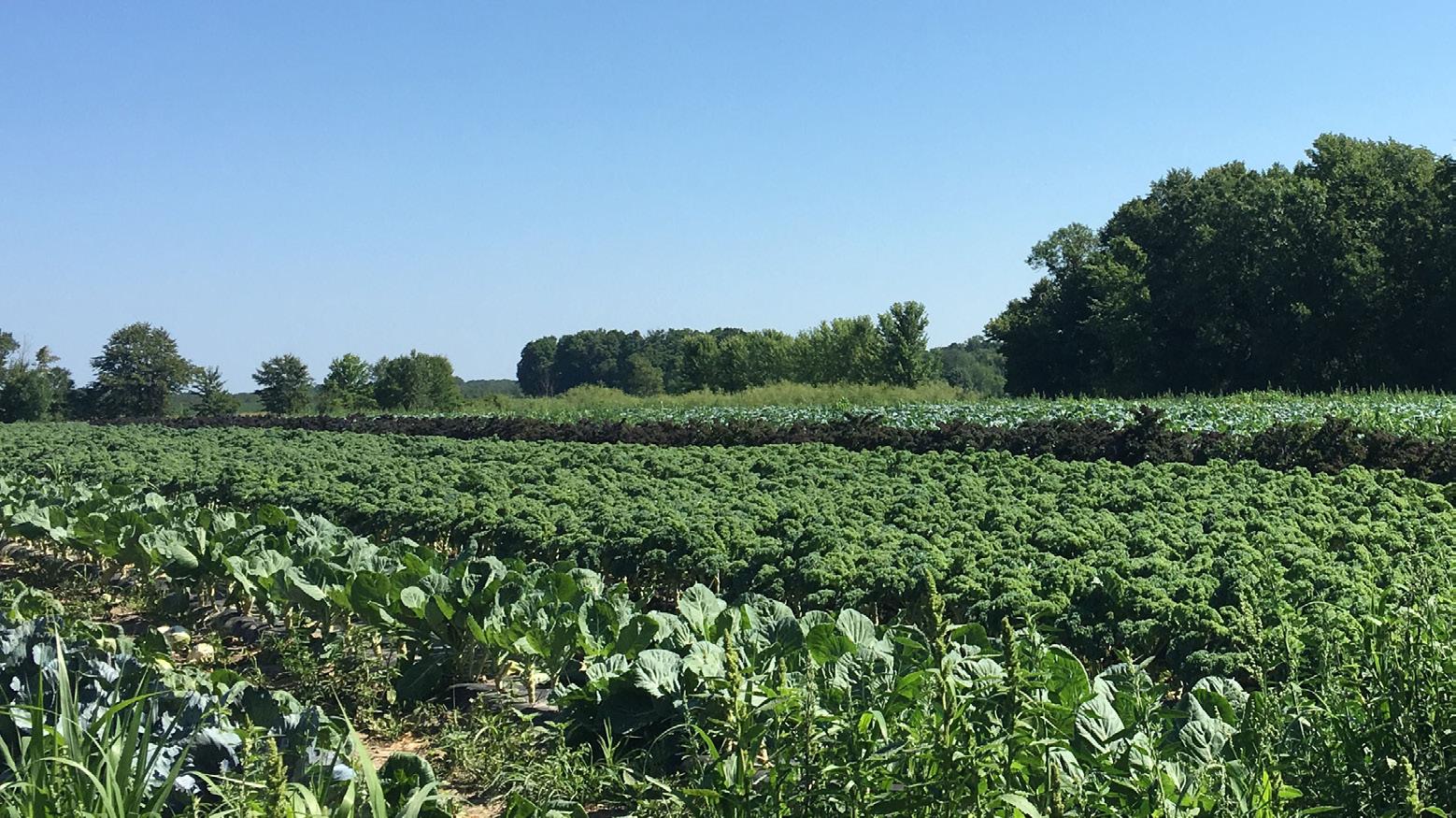 By CloVer Bee Farm
By CloVer Bee Farm
With the beginning of every growing season; hopeful is the farmer. Plans are made, seeds are sown, and bets are made for ideal conditions. All of this is inspired by a small seed. Seeds hold potential for so much. We are Diversified Market Farmers who run a CSA focused on vegetables. The diversity and availability of seeds are essential to our busi ness. Lately, for many of us life has thrown more challenges, and this has been hard to deal with and adapt to. From not being able to secure the seed varieties we knew from our previous years of farming to droughts and unpredictable rains, as well as personal challenges within and outside of farming. All of this begs the question: “What is going on in the seed saving and seed distributing world? How does this affect seed supply”?
Both Paul Betz of High Mowing Organic Seeds and Clint Freund of Cultivating the Commons had great answers to those questions. In Clint’s response they mentioned it may be more difficult for humans to adapt than the plants we rely on, “Plants, at large, will move quick ly in ways they know how and fill the new niches that need filling. The plants we’ve brought with us and chosen as close friends in our agriculture might not travel forward as easily. Bringing [over] crops that
were Indigenous to the Mediterra nean to the Upper Midwest’s moist, hot and cold climate doesn’t bode well for their adaptability.” With that statement it begs the question of: “What would we do as a CSA farm without that cauliflower or broccoli? What would we do as a larger soci ety without those staples?”
High Mowing has adapted to chang es with a variety of tactics. One par ticularly bumpy challenge they have faced is the lack of certifiable land. On the whole, there is much more conventionally farmed land than organic, which causes fewer oppor tunities to grow large quantities of seed. High Mowing mitigates this by placing more contracts in many more places, which allows larger quantities to flow through the door in order to meet demand. Having these varying contracts also helps mitigate any crop failures that might occur often due to an unstable climate. A number of folks became interested in seeds and gardening during 2020 and the demand has continued. This can definitely be alarming for the late buying mar ket/CSA farmer! Paul mentioned that more people are interested in Organic seeds in general and that High Mowing seeds is doing what they can to help meet the demand such as, “dramatically increasing bulk storage.” Seed storage is es sential to keeping the legacy of the seeds alive. How does High Mowing keep those seeds viable? They have 35,000 ft of conditioned storage!
The area is held at 40 degrees with 40% humidity every day of the year. This way they also ensure that growers can order at any time and High Mowing can stand by their mission statement; ‘We offer 100% certified organic seed, bred to perform best in organic conditions with robust, vigorous genetics and modern disease resistances. We are passionate about supporting the im portant work of our organic growers and we know that together we can build a greener, more just and community supported world, one seed at a time.’
Adapting our current storing in frastructure is only one step to adapting to a changing world, but what other things are happening in the seed world? Outside of just the vegetable world every industry and every individual is feeling the effects of inflation. Buying early, in large quantities, and being more stringent with various things helps lessen the jumps in costs, but it isn’t stopping inflation. Garlic growers can easily attest to this. Organic garlic seed has nearly doubled in price in the last ten years due to demand and availability. Other seeds haven’t seen quite such a leap in cost, but they are still increasing in price year to year. Last year our regional repre sentative at High Mowing said their 2022 seed price would be going up 6%.
Historically though, how does the availability of seeds look? Are things as dire as some of us think, or do we have a skewed perspective because many of us haven’t been buying seeds for a long time? Paul Betz was a vegetable farmer prior to working for High Mowing. He has a great answer to this question: “The number of organic varieties that are available now is a lot greater than when I was growing vegetables. We have seen a continued commitment to organics from many of the companies that we have worked with for years, and they are bringing newer varieties to the OG market every season. When I started in 2007 [at High Mowing] in sales, our big mes sage to our growers was you need
organic B roadca ST er | 12
to order early, because there wasn’t enough seed to go around. That has changed. It seems to me that thanks to the diligence of places like High Mowing we CSA farmers can rest easily, the state of Organic seed here is strong.”
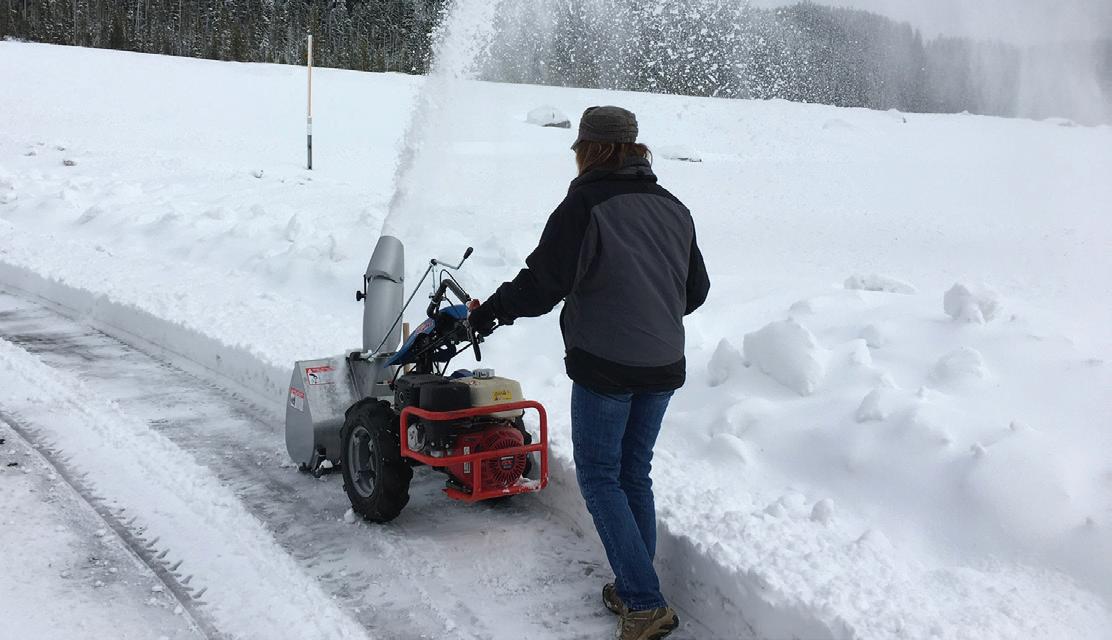


Farmers, gardeners, and everyone else in between are adapting, reacting, and pivoting with the world’s many changes and challenges. Many of us are meeting this head on. Seed savers are at the forefront of all of this, and their vital role and dedication allows us to put food on our plate. Clint said something which really resonates and gives hope for the future, “ . . . handscale seed [com panies] look like a network of cooperators selecting and developing Open-Pollinated varieties for home gardeners and small farmers . . . providing more options and an emphasis on bio-regionally adapted seed. Subjecting our varieties to the rigors of Upper Midwest climates and testing our biennials.” This is the passion that many seed farmers hold. If demand for seed sustains or increases, the availability and adaptation will only increase the diversity of seeds. Ultimately, there will be more seed outlets and ideally, farmers and gardeners will be better equipped to meet many of the challenges they face in the future.


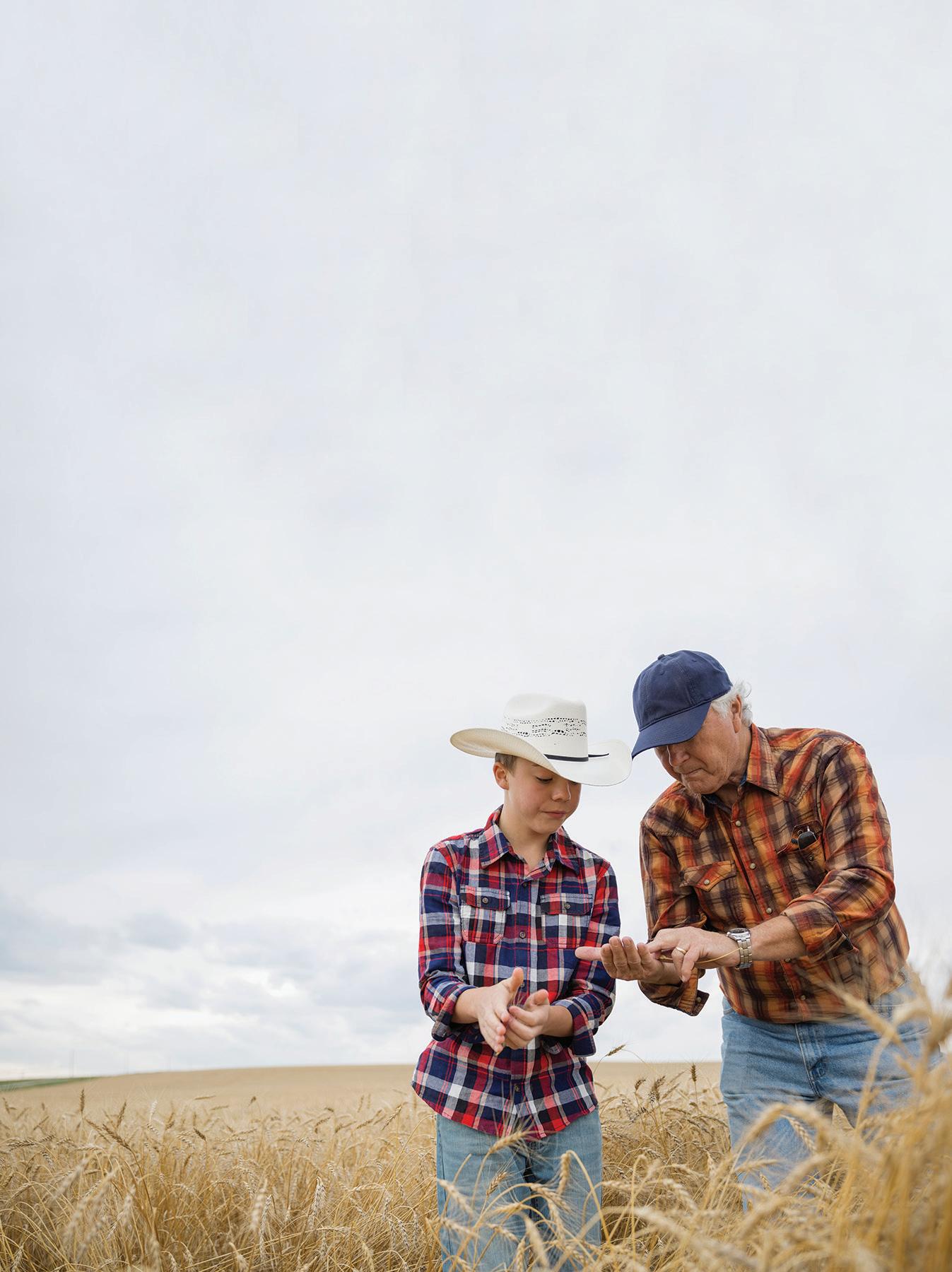

Clover Bee Farm was started in 2015 by Margo and Andrew Hanson-Pierre. They farm outside of Taylors Falls, Minn. growing diversified vegetables on three acres serving a CSA, farmers market, and wholesale.
Join our family of growers who share our passion for cultivating goodness. We’d like you to grow with us.
Pulses | Soybeans | Flax | Cereal Grains | Corn
Let’s cultivate goodness, together. Call 844-275-3443 or visit HFIfamily.com
M ar BL e S eed. org | 13
• SELECT TRACTORS & ATTACHMENTS ON SALE NOW • FIND SALE PRICING & YOUR NEAREST DEALER AT www.bcsamerica.com SALE ENDS 12/31/22
2022 Healthy Food Ingredients.
©
Forest Assisted Migration
By daVid aBazs
Thirty-six years ago, as my wife and I were searching for land to start a small diversified farm in the Northwoods, we were only interested in parcels that had already been cleared of trees and were located above the 40’ latitude line, thus shortening our growing season and giving us time to do other things along with farming. We picked Finland, Minnesota on a map based on its geography and location along the North Shore of Lake Superior. We visited the area in November, and by January we were living out our dream on an old Finnish homestead that was resprouting with trees and shrubs after a brief period of agriculture half a century earlier. The twenty acres of cleared land, initially required to obtain ownership through the Homestead Act, were growing back with wild berry bushes and the begin nings of the northern forest.
We made our first compost piles out of moose and bear “manure” to start the process of building up the thin soil and turning the land into fertile gardens amongst the trees that dominated the landscape. The gardens expanded and the fields grew in fertility and abundance, but the forest around the homestead seemed compromised and weak, battered by extreme weather, diseases, and pests. The boreal and mixed hardwood forests along the entire north shore of Lake Superior were struggling. Past logging prac tices, massive wildfires, and poor land and resource man agement choices, along with a changing climate, had all put a noticeable strain on the forest’s resilience and recovery.
At first, we pushed back against the idea that climate change could put the future of our northern forest in jeop ardy. Now, with documented temperature rises of 2.5 ‘F in parts of our region and our personal experience of navigat ing ever more extreme weather conditions, we have begun to accept and adapt to what is happening. We see the changes, we feel the changes, we mourn the changes - but we also are motivated to act in response to these changes. What can we do?
Through the research of professors Julie Etterson at the University of Minnesota - Duluth and Meredith Cornett and The Nature Conservancy, we learned that farmers in our region may have a role to play in increasing the integrity of our forests. Their test plots showed that tree seedlings grown from seed sources south of us are more resilient and robust than tree seedlings grown from local seed sourc es. It is suggested that seed from as far south as 250 km
might be better suited for the current growing conditions in our area. This research provided us with a possible way we could assist the forest to be more resilient and thrive into the future by “assisting” in the migration of the tree genetics. The forest no longer has the luxury of thousands of years to adapt to gradual change. Some models indicate that there is as little as 50 years before climate change will be enough to turn northern Minnesota’s boreal and hard wood forest into an oak savanna grassland with only a few pockets of trees.
The Forest Assisted Migration project is our way of helping the trees “walk” north in a timescale that just might make a difference in the existence and health of the forests for future generations. Three entities came together to create a plan: Julie Etterson of University of Minnesota Duluth, Meredith Cornett of The Nature Conservancy, and me. I work for University of Minnesota Extension as executive di rector of the northeast Regional Sustainable Development Partnership. We identified two bottlenecks:
1. There is no seed collection system in place that sourc es genetically diverse seeds from southern locations in Minnesota with the intent of planting them in more northern locations. We needed to identify locations, develop seed-collecting protocols, and find people to do the collecting.

2. We need to increase the number of these “climate for ward” tree seedlings available for restoration and reforesta tion needs.
To address the first bottleneck, the sourcing of tree seeds, we have identified forests, groves, parks and farm land in central and southern Minnesota (south of the tree planting region) where we have permission to gather seed. Some of these areas have large stands of Red and Bur Oak, Red and White Pine, Black Cherry, Yellow and River Birch and Amer ican Basswood. As we establish a more robust team of seed collectors, we have begun to collect those tree seed populations to make these seeds available for planting as part of our solution for the second bottleneck, a more robust growing network.
That brings us to the beginnings of the Farm and Forest Growers. In 2021, we piloted our first group of 14 farmers, providing training and equipment information to get the farmers tooled up to plant the first group of climate adapt ed tree seedlings. We had large and small tree seedling operations assist us with this training; including the green house manager of the University of Minnesota - Duluth, a former manager of potlatch, a manager of JW Tourney USFS Nursery in Michigan, the founder of the Itasca Nursery and the Badoura DNR Minnesota State Nursery manager. We researched and found plug and pot options for growing the seedlings. All of the equipment and seeds were based on the criteria of The Nature Conservancy, the main supporter of this growers network development, which is providing a guaranteed market at a premium price. There is additional interest from Minn. Power, County For estry departments and Soil and Water Conservation Districts, and we know the market for these climate forward seedlings will continue to grow based on the commitment of a coalition of groups building out the vision of Minnesota Million - the reforestation of one million acres of our state by 2045.
organic B roadca ST er | 14
PHOTO: LISE AND DAVID WORKING ON THE TREES. PHOTO CREDIT: CARYN MOORE
Most of the farms and family nurseries who were involved in the Farm and Forest Growers’ pilot year had greenhous es and growing experience, but they spent thousands of dollars and countless hours adapting their operations to growing this new crop of trees. Each of the 14 farmers had different types of structures, potting soils, fertilizers and growing methods. Along with the worst drought in memory that first year, we had mice and squirrels eat the seeds, irrigation systems that failed, and temperatures hotter than normal. After growing the trees for the full season, each farmer then has to store the seedlings at or near freezing to get them through the winter in good condition for delivery to the Nature Conservancy in the spring. There were good survival rates in some of the root cellars but other efforts to store the seedlings outside resulted in significant losses from rodents and the cold. To be acceptable for sale to our buyers, each seedling had to be at least 4” tall with a single stem in a cell with a diameter of 1 - 2” and a depth of 5” - 8”. Many of our trees did not meet the size criteria, and we had some that were total losses. There were countless management adaptations along the way, as we compared notes and learned from each other. Despite these chal lenges, by delivery day, we had 10,000 very nice tree seedlings for The Nature Conservancy. With all of the initial capital costs and expenses, there was no profit that pilot year, but we learned a lot. And what we heard from the farmers, as eternal optimists, was “next year will be better!”
In 2022, we increased to 17 growers, one farmer pulling out due to labor challenges and one from illness, with five more growers stepping forward to join the Farm and Forest Growers work. With the farms and nurseries spread out throughout Northeastern Minnesota, the growers continued to gather by Zoom. We shared notes, leaf conditions, seed germination rates, watering ideas, successes and failures. Management methods and changes were made to turn our vegetable greenhouses into tree seedling houses. In some cases, roll up side openings were installed, fans added, shade cloth trialed, automated irrigation systems designed not to mention new techniques for seed planting, new potting soil mixes and methods of filling the plugs more efficiently. At my farm, I was able to add shade cloth and an automated watering system that gave 8 minutes of water, 4 times a day (at 4 hour intervals) and the seedlings responded well. Not only did the yellow birch grow much, much better, the reduction of our labor was a game chang er. Along with improved health, the yellow birch exceeded the minimum height criteria by reaching 12” and more. So high that now my boxes are too small for the packaging and storing cycle!




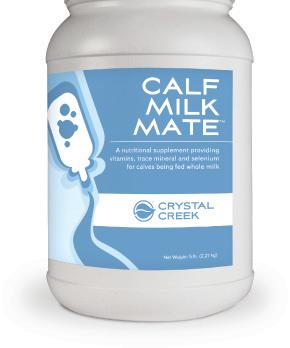

Along with the individual challenges and solutions, we are working with our University, organizations and institu tions to build out the seed collecting systems so that the farmers have all the seed that is needed to plant. Efforts are underway to build more infrastructure with our grow ers within the larger Forest Assisted Migration project to create a more resilient human system to support ongoing assistance in building a greater resilient and thriving forest system. The Farm and Forest Growers are exploring incorporating as a cooperative and the systems are being built to sustain a robust “supply chain” of climate forward tree seedlings to keep our forest alive, not just for our economy, tourism, and wood resources, but for the wildlife of the Northwoods that depend on an intact forest ecosystem.
Farmers can be and are becoming a key player in finding solutions to the social and ecological crises of our time. Along with soil carbon considerations, now farmers are assisting with the increased production of “climate forward” tree seedlings to help the existing forest health, diversity and resilience while adding additional forested land through the Minnesota Million initiative. This might be one way to be part of the solution while making a living wage doing so!

David Abazs and his wife Lise have run Round River Farm for the past 35 years. He is the University of Minnesota Extension’s Executive Director of the Northeast Regional Sustainable Development Partnership. He will be presenting an Organic University on Forest Assisted Migration at the Marbleseed Organic Farming Conference.

M ar BL e S eed. org | 15
Defining what’s possible in grain. Let’s innovate together. Contact us at ipgrains@scoular.com or (612) 851-3705. Join us in our commitment to: • Innovative ag solutions • Forward-thinking sustainability • Supply chain & logistic expertise
BOOk REVIEW
healing grounds:
Climate, Justice and the Deep Roots of Regenerative Farming
By lori stern
Iwas excited to read the book Healing Grounds after listening to a live webinar with author Liz Carlisle. Dr. Carlisle had demonstrated her support for farmers stewarding the land through her previous book Lentil Underground (2015). And this book similarly tells the stories of farmers, but this time with a focus on those that are relying on deep cultural traditions of heal ing the planet and the potential for addressing climate change.
I initially picked up this book to hear the voices of Indigenous, Black, Latinx, and Asian farmers who are reviving ancestral methods of agricul ture. Healing Grounds is organized with four chapters that highlight research and agricultural practices from each of these communities. Learning about these methods and how they have been incorporated into current regen erative farming systems to address climate change created a fuller picture of how much we borrow as an organic and regenerative movement from BIPOC farmers that have stewarded the land well before us.
Chapter one highlights Latrice Tatsey and her research on the buffalo’s role in creating an immense ecological ly productive landscape. Tatsey is a member of the Blackfeet Nation. Her research has found that buffalo grazed pasture has more diversity in plant species and the plants are much larger than in pastures grazed by cat tle. Tatsey observed, “When you have healthier plant species, they are taking more CO2 out of the atmosphere and bringing it back into the soil profile. Which potentially means buffalo could help us respond to climate
change.” Between Tatsey’s research findings and the unfolding story of re-establishing a wild buffalo herd to the Northern Plains, Carlisle recounts U.S. policies that resulted in genocide and the 1887 Dawes Act that parceled land into reservations and individ ual tribal members. This approach allowed the U.S. government to seize land they deemed as ‘extra.’
With carbon rich soils under prairie grassland tilled up and released by colonial agricultural practices and the buffalo gone, Carlisle details the plight of prairies today, recalling the dust bowl and overuse of chemical fertilizers that pollute waterways. Through the story of a ‘multi-national’ effort by the Blackfoot Confederacy’s Iinnii Initiative to restore a wild buffalo herd, Carlisle links the beneficial and reciprocal relationships that result for not only buffalo, but other prairie wildlife and people as well. Chapter one’s theme of reciprocity through grazing and no-till methods practiced by other Indigenous tribes in lowlands and river valleys sets the tone for the rest of the book.
In chapter three, “Hidden Hotspots of Biodiversity,” Carlisle tells stories of multiple researchers in Mexico and Central America who asked farmers about weed and pest problems only to hear farmers say they had none. Instead, these “farmers described the intricate ecological interactions that kept insect populations in check” and utilized wild plants, viewed by researchers as weed. Chapter three’s lessons were about balance, diversity, and the intricacy of ecosystems that include nature and cultivation.
Each chapter contains rich descrip tions of traditions and approaches to problems created by our “modern agricultural system.” However also woven through these narratives are stories of resilience in the face of loss of original land connection and the potential that these traditions could be lost as well. The exploration of
cultural traditions around food and farming provides enough detail for farmers who are interested in imple menting some of these methods to find out more. Not only are these the stories of community members, but they are rich with research findings about the benefits of these ancestral approaches that relied on diversity and interconnections.
Dr. Carlisle sandwiches these narra tives and histories from Indigenous. Black, Latinx and Asian farmers and researchers between chapters that put this agricultural knowledge sys tem in context. What begins the book as a simple question, “Can soil really save us?”, evolves into an exploration of how we got to a food system that is both fragile and extractive. Carlisle makes the case that current agricul tural policy and practices support vast monocultures and false control of soil fertility through chemicals that kill beneficial microbes and insects.
As with many quests, when you begin with the end in mind, Healing Grounds takes Carlisle and the reader from a question of soil carbon to questions of values and morals. In her closing chapter she identifies that 40 per cent of the U.S. population is made up of the communities highlighted in this book. People referred to as BIPOC or Black, Indigenous, Latino and Asian Americans, make up more than 60 percent of the agricultural laborers, yet they own only 2 percent of agricultural land. Carlisle, and those whose stories she shares, make the argument that the U.S. agricultural system and the climate would be better served to listen to the farm ing wisdom of these communities. However, through Carlisle’s research ing this book, she came to learn that: “The extraction of carbon from soils was just one integral piece of a much larger process of extraction, a process that included the theft of Indigenous lands, the forced enslavement of millions of Africans, and the extortion of immigrant labor. To repair the soil, we needed to repair it all.”
Lori Stern is the Executive Director of Marbleseed. You can read her letter from the Executive Director on page 3.
organic B roadca ST er | 16

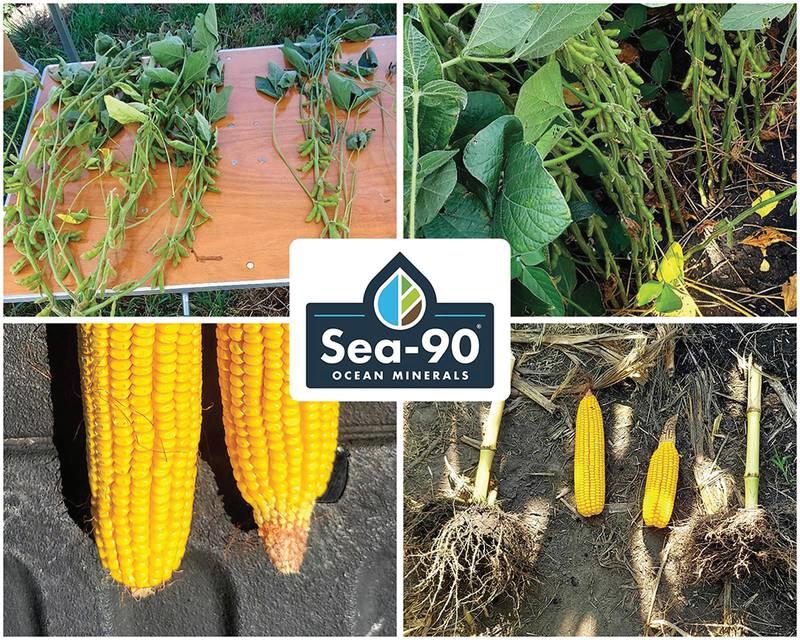

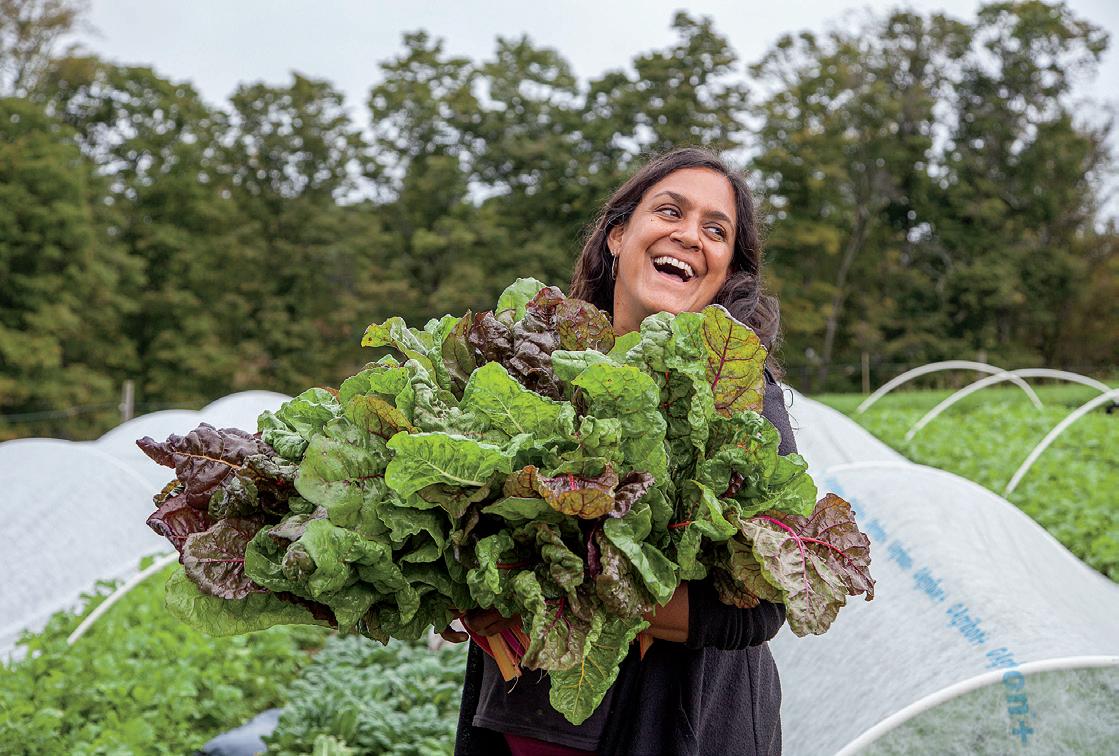
M ar BL e S eed. org | 17
The end of organic (aS we know iT)
By Jim riddle
The fundamental concepts of organic farming have always been, “Feed the Soil, not the Plant,” and “Healthy Soil leads to Healthy Crops, Healthy Animals, Healthy People, and a Healthy Planet.” Now, those concepts have been turned on their head, with a recent Appeals Court ruling that you don’t even need soil for growing terrestrial crops, in order to be certified organic in the United States.
Will the 9th Circuit Court’s September 2022 ruling, which stated, “no part of the statute [Organic Foods Production Act] clearly precludes organic certifi cation of crops grown hydroponically,” mean the end of organic farming, as we know it? Maybe. Maybe not.
If the ruling is allowed to stand, it will mean that crops grown using hydro ponic methods can officially be cer tified as “organic,” as has been done by a handful of certification agencies for a number of years. Consumers will continue to be deceived when they buy organic products, thinking that such products were grown in healthy soil, using methods that “foster cycling of resources, promote ecological balance, and conserve biodiversity,” as required by the legal definition of “organic production.”
It will also mean that authentic
organic farmers, who produce crops in healthy soil, who protect and enhance the biological diversity of their operations, and who use green manures, cover crops, crop rotations and compost to recycle nutrients, will continue to compete with hydroponic operations that use inputs “approved for organic use,” but do not comply with the soil building, crop rotation, and ecological requirements of the Organic Foods Production Act (OFPA) and the National Organic Regulations (7 CFR 205).
The Court’s ruling directly contra dicts a stated purpose of the OFPA, which is “to assure consumers that organically produced products meet a consistent standard.” Consumers who purchase “organic” blueberries, blackberries, raspberries, tomatoes, peppers, cucumbers and leafy greens will have no way of knowing if those products were produced by opera tions that comply with all require ments of OFPA and 7 CFR 205, or if those products were produced by hydroponic operations that only use “approved inputs” in their nutrient solutions.
In its ruling, the Court stated, “the statute imposes three requirements for organic crops—a restriction on synthetic chemicals, 7 U.S.C. § 6504(1); a prohibition on growing
organic crops “on land to which any prohibited substances . . . have been applied,” id. § 6504(2); and a re quirement that organic products “be produced and handled in compliance with an organic plan,” id. § 6504(3).”
The OFPA requirements for an organ ic crop production plan, at 6513(b)(1), state, “An organic plan shall contain provisions designed to foster soil fertility, primarily through the man agement of the organic content of the soil through proper tillage, crop rotation, and manuring” (emphasis added).
The Court stated, “USDA’s decision [to allow “organic” hydroponic] interpret ed that provision to mean that if crops are grown in soil, their producers must take measures to preserve that soil’s “fertility” and “organic content” (em phasis not added).

That interpretation is not supported by the OFPA, which contains no language that allows for organic crop production plans which do not address soil fertility. The word “if” is not used in the plain language of section 6513(b), which establishes the requirements for organic crop production plans.
In addition, the Court failed to ad dress the fact that USDA has issued no rules or regulations to guide the organic certification of hydroponic operations. In fact, there is no language in the OFPA or 7 CFR 205 that supports organic certification of hydroponic systems.
The Court went further, stating that the USDA’s “interpretation is consistent with the OFPA, which provides that “[i]f a production or handling practice is not prohibited or otherwise restricted under this chapter, such practice shall be permitted unless it is determined that such practice would be inconsistent with the applicable organic certification program.” 7 U.S.C. § 6512.”
That interpretation is extremely dan gerous and could open the door to all sorts of technologies, systems, and practices, such as genetic engineering
organic B roadca ST er | 18
PHOTO: JIM RIDDLE AND JOYCE FORD, BLUE FRUIT FARM. CREDIT: LAURIE SCHNEIDER
and food irradiation, which are not explicitly prohibited by the OFPA, from being approved for organic use, if the regu latory prohibition on such practices is challenged in court.
There is a silver lining on this issue, however – the National Organic Standards Board (NOSB), which is charged by the OFPA with providing advice to USDA regarding implemen tation of the organic law and with making “consistency” determinations, clearly stated, in April 2010, by a decisive 12-1 vote, that, “Hydroponics, the production of plants in nutrient rich solutions or moist inert material, or aeropon ics, a variation in which plant roots are suspended in air and continually misted with nutrient solution, have their place in production agriculture, but certainly cannot be classified as certified organic growing methods due to their exclusion of the soil-plant ecology intrinsic to organic farming sys tems and USDA/NOP regulations governing them.”
This is a clear indication that USDA’s statutory advisory board has ruled that hydroponic production is not con sistent with organic certification. This important fact was ignored by the Court.
Likewise, the Court failed to mention that the NOSB, in establishing the “Principles of Organic Production and Han dling” by a 15-0 vote in October 2001, stated, “Organic ag riculture is an ecological production management system that promotes and enhances biodiversity, biological cycles, and soil biological activity.” The “Principles” go on to state, at point 1.2, “An organic production system is designed to optimize soil biological activity.”
The Court ignored the General requirement section of 7 CFR 205.200, which states, “The producer or handler of a production or handling operation intending to sell, label, or represent agricultural products as “100 percent organic,” “organic,” or “made with organic (specified ingredients or food group(s))” must comply with the applicable provi sions of this subpart. Production practices implemented in accordance with this subpart must maintain or improve the natural resources of the operation, including soil and water quality.”
7 CFR 205.2 defines the “Natural resources of the opera tion” as “the physical, hydrological, and biological features of a production operation, including soil, water, wetlands, woodlands, and wildlife.” Hydroponic operations do not comply with this provision, since the crops are produced in isolation from soil and natural resources. The Court even ignored the definition of “organic production” at 7 CFR 205.2, which requires that organic production systems integrate “cultural, biological, and mechanical practices that foster cycling of resources, promote ecological balance, and conserve biodiversity.” There is no way that hydroponic operations comply with the soil fertility requirements of the OFPA 6513(b)(1); the natural resource requirements of 7 CFR 205.200; the definition of “organic production” in 7 CFR Part 205.2; or are consistent with organic certification, as ruled by the NOSB.
To protect organic farming, as we know it, what can be done? There are a number of viable options:
1. Partial Appeal – Parties who filed the original suit can challenge the substantive portions of the Court’s ruling, due to the omissions, misinterpretations, and misrepresenta tions it contains.
2. New Suit – A new lawsuit, based on the USDA’s failure to enforce the law and rule as written, could be filed by cer tified organic growers who follow all requirements, yet are forced to complete with hydroponic operations that only have to comply with “approved input” rules.
3. New Suit - A new lawsuit could be filed by consumers, based on the USDA’s failure to enforce the law and rule as written, and for its failure to follow the second purpose of the OFPA “to assure consumers that organically produced products meet a consistent standard.”
4. Economic Pressure – Expose the corporations, including Driscoll’s, Wholesum Harvest, Eden Green, Superior Fresh and others, which sell hydroponic products as “organic.”
5. International Pressure – No other countries, including our major trading partners, allow hydroponic products to be labeled “organic” and most explicitly prohibit it. Pressure can be brought to bear to exclude hydroponic products, ingredients, and formulated products, certified as “organ ic” under the USDA, from accessing foreign markets, and reciprocity agreements can be amended.
6. Support local and regional organic producers – Buy from local and regional organic growers who follow all OFPA and regulatory requirements. Plant organic gardens and orchards.
7. Support the Real Organic Project and Rodale’s Regener ative Organic Certification, both of which highlight opera tions that fully comply with all requirements of OFPA and 7 CFR 205, including those which require soil building, crop rotation, protection of biodiversity, and natural resource management.
8. Amend the Law – As a Big Plan B, amend the OFPA to make it clear that hydroponics, genetic engineering and food irradiation are not allowed in organic. Period.
While the USDA would like us to believe that this is a “set tled issue,” it will not be settled until the USDA enforces the soil fertility provisions of 6513(b)(1) and uses its accredita tion program to stop certification of hydroponic operations as “organic.”
Jim Riddle grew up on a small, diversified farm in Iowa, and has been involved in farming since graduating from Grinnell College in 1978. In addition to operating Blue Fruit Farm, Jim has been involved in the organic sector for more than 30 years as an organic inspector, consultant, educator, speaker and activist.
Join Marbleseed in February at our 34th Organic Farming Con ference in La Crosse, Wisconsin, where we will host a lively and frank panel discussion on Integrity in Organics. All voices and positions are welcome as we try to identify how we maintain and improve the organic label and what we need from the USDA as a community.
M ar BL e S eed. org | 19
With a facility solely dedicated for processing organic and non-GMO seed, Beck’s Great Harvest Organics meets every organic standard. Plant confidently with Great Harvest Organics.

organic B roadca ST er | 20
ORGANIC SEED YOU
DEPEND
SECURE YOUR FAVORITE OR NEW PRODUCT BEFORE IT SELLS OUT. SCAN THE QR CODE TO LEARN MORE.
CERTIFIED
CAN
ON.




M ar BL e S eed. org | 21 We Buy Organic & Conventional Non-GMO: • Oats • Corn • Wheat • Barley • Soybeans • Flax • Rye
is a
depend on direct farmer relationships and offer
gate pricing and contracted grower production.
offer
Sustainable Grower Program – our
is here to help you with any agronomy questions you may have so you can get the best return on your production. When you sell to Grain Millers, your grain is going directly into some of the most technologically advanced mills in the world! grainmillers.com | 800.328.5188 THIS IS MORE THAN A PARTNERSHIP. IT’S A Promise BUILT ON FARMER Relationships.
Grain Millers
privately held, family-owned company. We
farm
We also
a
Crop Science Team
By marBleseed staFF
In late August the USDA announced a comprehensive effort aimed at increasing organic and certified organic production. The agency cited the increase in consum er demand for organic products in the face of a 71% decrease in certification applications as a main moti vator. In the initial announcement, USDA outlined an approach that spans several agencies and includes the Agricultural Marketing Service (AMS), Risk Management Agency (RMA) and Natural Resources Conservation Service (NRCS) as the primary agencies supporting the Initiative, which will focus on three areas.
As summer turned to fall, we learned more about how each distinct agency within USDA would administer their various components. After years of advocacy for organic and sustainable agriculture, it was exciting to hear that such a broad approach would be utilized to address all the factors that might be contributing to a downturn in applications for certification.
One critical area of the broader Organic Transition Initia tive is $100 million dollars in direct resources to farmers. At the time of this article, many of the efforts an nounced this summer are well underway. The RMA is on a ‘road show’, explaining new programs meant to provide farm safety net protections for smaller producers with diverse operations (see page 26 for more info.)
In addition, organic advocates have been lobbying for the restoration and increase for the organic cost share program. These funds help farmers offset the cost of certification. Again, for diverse farms with mul tiple production areas or scopes, organic certification fees without assistance often made no business sense particularly if an aspect of the overall farming business was small, for example egg sales/layers integrated into a primarily vegetable farm. It was exciting to see this program, despite its often-complicated implementation, mentioned as a critical way USDA provides resources to organic farmers.
Other direct assistance to farmers will include better connections with NRCS programs. Often both the size of organic operations as well as the potential redun dancy in organic systems practices and conservation practices made it difficult to navigate NRCS for both farmers and agency staff. The OTI will support more conservation going to organic farming.

The other component that was recently announced is the Transition to Organic Partnership Program or TOPP. USDA, through AMS wants to “ensure that farmers transitioning to organic have the support they need to navigate that transition, including a full supply chain to American consumers who demand organic choices in their supermarkets daily.” (USDA press release 8/22) Plans are underway for the National Organic Program to initiate networks of partners in six regions across the United States. One organization in each region would be tasked with reaching out to partners across their region that provide direct farmer training, education, and outreach activities. The focus of all these educational formats is supporting farmer transition to certified organic. USDA is committing another $100 million dollars to this effort.
Mentoring, now accepted as an incredibly effective method for farmers to learn from each other will be central to these activities in each of the six regions. The mentor relationship truly enables farmers as adult learners to get individualized support specific and relevant to their farm goals and enterprises. Given the three-year transition required to certify, the OTI is also committed to paying mentors to stay with their farmer mentees throughout the transition period and ideally during the first year of certification.
Marbleseed, a long-standing farmer education organization with the country’s oldest farmer Mentor Program looks forward to participating in these activities in the Midwest. Expanding the Marbleseed mentor program to create a relationship throughout transition will strengthen the cohort relationships initiated during the one-year mentorship Marbleseed currently offers. The past two years have seen a greater effort to col laborate among farmer educational organizations. The opportunity to coordinate services and not duplicate the efforts of partners is critical in a time of limited resources. USDA’s approach to regional, collaborative teams to provide community building, mentorship training and support, technical assistance, workshops, and field days relevant to transition and organic pro ducers in the areas OTI will focus on creates an exciting opportunity to strengthen all of these efforts.
Many organizations focus on beginning farmers and do it incredibly well. Marbleseed has shifted to focus on ‘intermediate’ beginning farmers who have been farming for 3-5 years. Their concerns are often more business and markets related. They have experience and are ready to become the next farmer leaders and mentors. OTI will bring more farmers interested in transitioning to organic who have years of experience and deep knowledge of their land. It will add a nuance to the mentor relationships and subsequent educational program development that has consequences
organic B roadca ST er | 22
for access to other areas of the initiative like RMA and NRCS. If they have accessed these programs prior to organic transition, their expectations of support and resources could potentially create more demand and strengthen these programs as well.
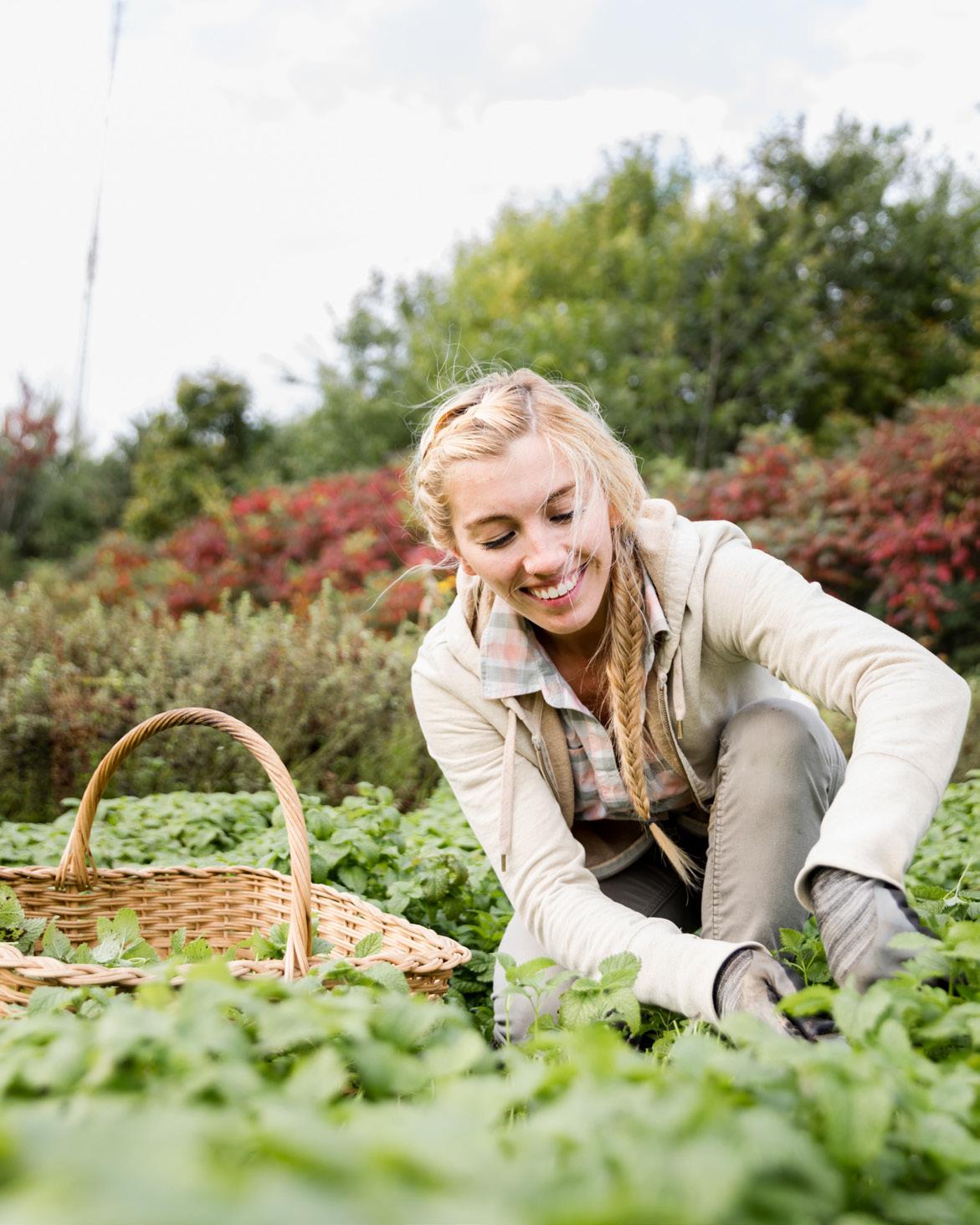
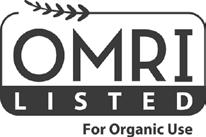
More experienced transitioning farmers will come with business knowledge as well but may need information on organic markets and trends. However, farmer knowl edge in these areas is not enough to meet consumer demand for organic products. Organic supply chains need stronger infrastructure for processing and distribu tion. Demand for organic ingredients and inputs outpace the supply. These holes in the supply chain create risks to farmers in other areas. This is the third area of focus for the OTI. Less is currently known about how this final $100 million dollars will be deployed. The USDA is seeking stakeholder input and comments through listen ing sessions and smaller regional meetings at the time this article went to press.
The Organic Transition Partnership Program (TOPP) is a col laborative effort involving many partners working together towards a common goal. The TOPP partnership network covers six regions: the Mid-Atlantic/Northeast, Southeast, Midwest, Plains, Northwest, and West/Southwest. Marble seed and the Ohio Ecological Food and Farm Association are two of the Midwest partners via the MOSA cooperative agreement that will be serving transitioning and existing organic farmers in this region.

The Ahimsä Alternative, Inc. For all things Neem & Karanja BIOLOGICAL INSECTICIDE 100% Cold Pressed Neem Oil Controls Aphids, Army Worms, Beetles, Stink bugs, Caterpillars, Leaf hoppers, Leaf miners, Whitefly, Mealy bugs, Midges, Nematodes, Spider mites, Weevils, Scale, Thrips. www.nimbiosys.com


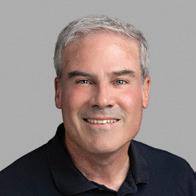
LET’S MAKE YOUR PLANS A REALITY, TOGETHER.

100% Cold Pressed, Wild Harvested Neem Oil, Karanja Oil, Neem & Karanja Cake Order @www.neemresource.com or call 1-877-873-6336

NEEMESIS Powerful protection against flies & other irritating critters! NEEMESIS is a castor oil-based liquid with pure Neem Oil, Karanja Oil & other essential oils. Dilute 1 gallon with water or oil (or a combination of both) to make up to 12 gallons of finished product. Can be used in livestock rub oilers and back-pack sprayers. Suitable for application directly on livestock and stall/parlor areas.
WE SEE POTENTIAL IN YOUR PLANS. Paul Dietmann Sr. Lending Specialist (608) 963-7763 Paul.Dietmann@compeer.com
COMPEER.COM/EMERGINGMARKETS
Sai Thao
Sr. Lending Specialist (612) 597-4086
M ar BL e S eed. org | 23
Sai.Thao@compeer.com Whether your farm is a non-traditional operation marketing directly to consumers or through local and regional food systems, our Emerging Markets lending specialists can provide expertise and financial solutions designed to give you the tools to succeed. And our focus on exceptional client experience is at the heart of everything we do. See why our clients trust us to make their goals possible. Compeer Financial can provide assistance with financing and operations based on historical data and industry expertise. Compeer Financial does not provide legal advice or certified financial planning. Compeer Financial, ACA is an Equal Credit Opportunity Lender and Equal Opportunity Provider and Employer. © 2022 All rights reserved.
By Joy KirKPatriCK
Every day, farmers and farm families face financial challenges, demands of the job, and changes outside of their control that impact their lives and livelihoods. Market volatility for inputs and outputs, access to labor, challeng ing weather conditions, and the pressure to grow and modernize are underlying drivers of this occupational stress.
Coping with these daily challenges can lead to chronic stress. This stress impacts farmers’ mental and physical well-being, relationships, and decision-making. A 2019 survey conducted by the American Farm Bureau Federation found that mental health is an important issue to 82% of farmers/farm workers or their families. In addition, farmers and farmworkers are at a higher risk for death by suicide. In a recent analysis of suicide risk factors among farmers in the Midwest US, researchers Bjornestad, Cuthbertson and Hendricks, found that agricultural producers have higher rates of psychological distress, depression and anxiety compared to the general population. Wisconsin farmers are 1% of the population and make up 2% of the suicides in the state, according to Sara Kohlbeck, Director of the Division of Suicide Prevention at the Medical College of Wisconsin. Kohlbeck’s research has noted issues leading to this rate, including lack of access to services, stress from physical health issues, ready access to lethal means, and the overall stress of farming. Farmers have cited obstacles of cost, embarrassment and awareness of mental health to be a barrier in seeking treatment.
With the growing recognition of farm stress and mental health and well-being, several efforts to address this have been established in Wisconsin. The University of Wisconsin’s Division of Extension has partnered with the Wiscon sin Department of Agriculture, Trade & Consumer Protec tion (DATCP) to bring federal farmer mental health funding to Wisconsin from the USDA National Institute of Food and Agriculture (NIFA) as part of a multi-state North Central Region. As a participating recipient of this federal grant, Wisconsin is receiving $400,000 to create educational programs to help people identify farmers in emotional stress, educate on farmer wellness. The Resilient Farms and Families website offers education and resources on farm er wellbeing and mental health. The site developers are
weLLBeing
designing a map and populating resources for farmers by county. Extension has also received a Rural Opioid Techni cal Assistance grant to offer Mental Health First Aid (MHFA) and other behavioral health education to rural and farming communities.
As part of Governor Tony Evers’ 2019-2021 biennial budget, a farmer mental health assistance appropriation was created and $200,000 was allocated for DATCP to develop and launch its Farmer Wellness Program. Continuing funding at this rate as part of the state’s 2021-2023 biennial budget has allowed the program and usage of corresponding services to grow.
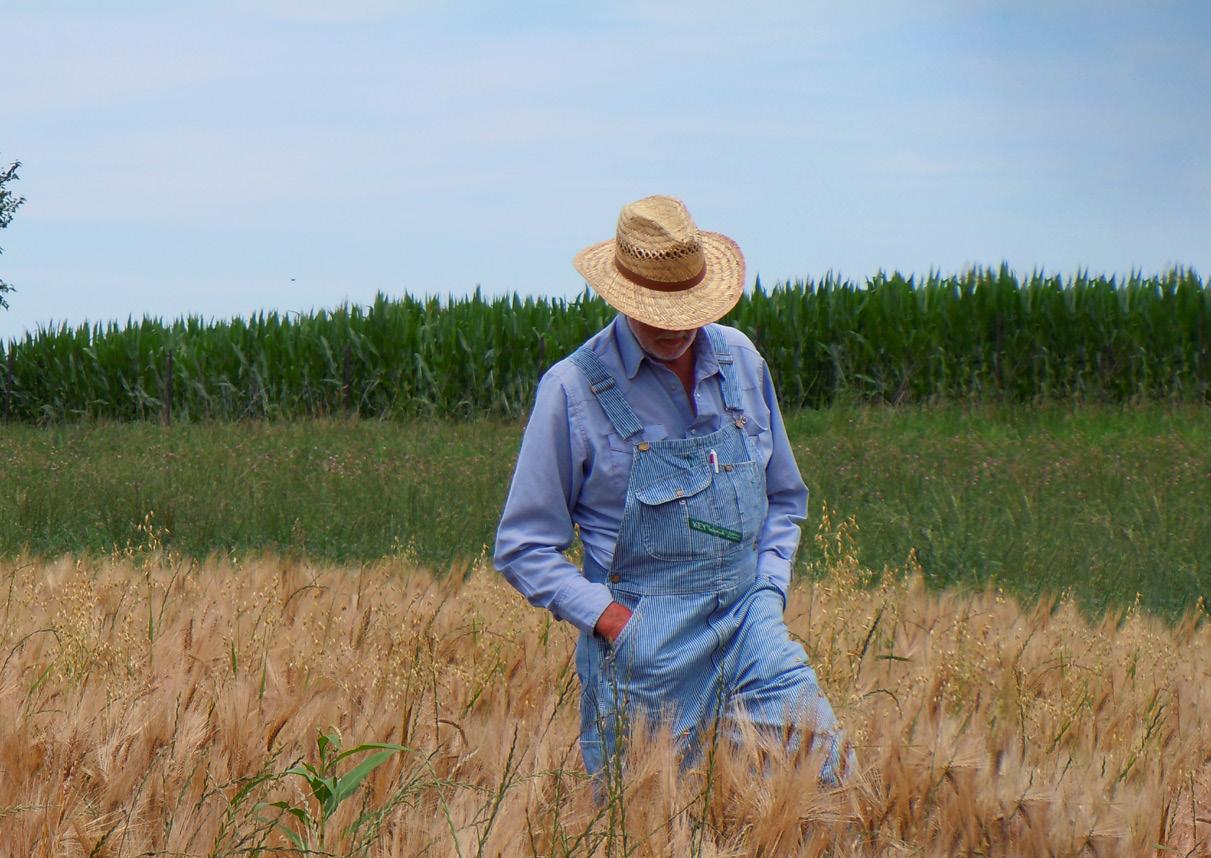
Additionally, DATCP is a recipient of over $500,000 in federal funding from NIFA awarded for stress assistance programing during the COVID-19 pandemic as part of the Consolidated Appropriations Act. These funds have been used to promote DATCP services to farmers throughout Wisconsin. Further, they are being used to increase farm ers’ access to mental health resources and collaborate with established partner organizations such as the University of Wisconsin’s Division of Extension and Marbleseed on peerto-peer training and support groups.
FarmWell Wisconsin is a collaboration between South western Wisconsin Community Action Program, University of Wisconsin – Madison, College of Agricultural and Life Sciences, and the Center for Community and Nonprofit Studies. The collaboration received a Wisconsin Partnership Program 5-year grant for their project, Addressing Stress ors, Preventing Farmer Suicide: Social Connectedness and Health for the five southwest counties of Wisconsin: Grant, Green, Iowa, Lafayette, and Richland counties.
Farm Neighbors Care Campaign is a social media cam paign to support our farmers who are facing stress due to low market prices, poor weather and crop conditions, etc. Farming can be an isolating career, especially if other family members work off the farm. It is important to check in on your friends, neighbors and family members to gauge how they are doing and offer support and a listening ear.
Farmer wellbeing and rural mental health cannot be treat ed like the crises of before, thinking that just when prices get better, and the rains starts or stops that everything will be ok. To break through the stigma and encourage selfcare, a consistent and constant support network needs to be built and remain in place.
Joy Kirkpatrick is the Farm Succession Outreach Specialist for the University of Wisconsin-Madison Division of Extension. She has worked for Extension for 29 years and worked on farm stress/farmer wellbeing since 2016. She is the Principal Investigator for Wisconsin’s subaward from the NC Farm and Ranch Stress Assistance Center, USDA NIFA Award 202070028-32728.
organic B roadca ST er | 24
heaLTh
working TogeTher To addreSS farMer
and MenTaL
related resourCes


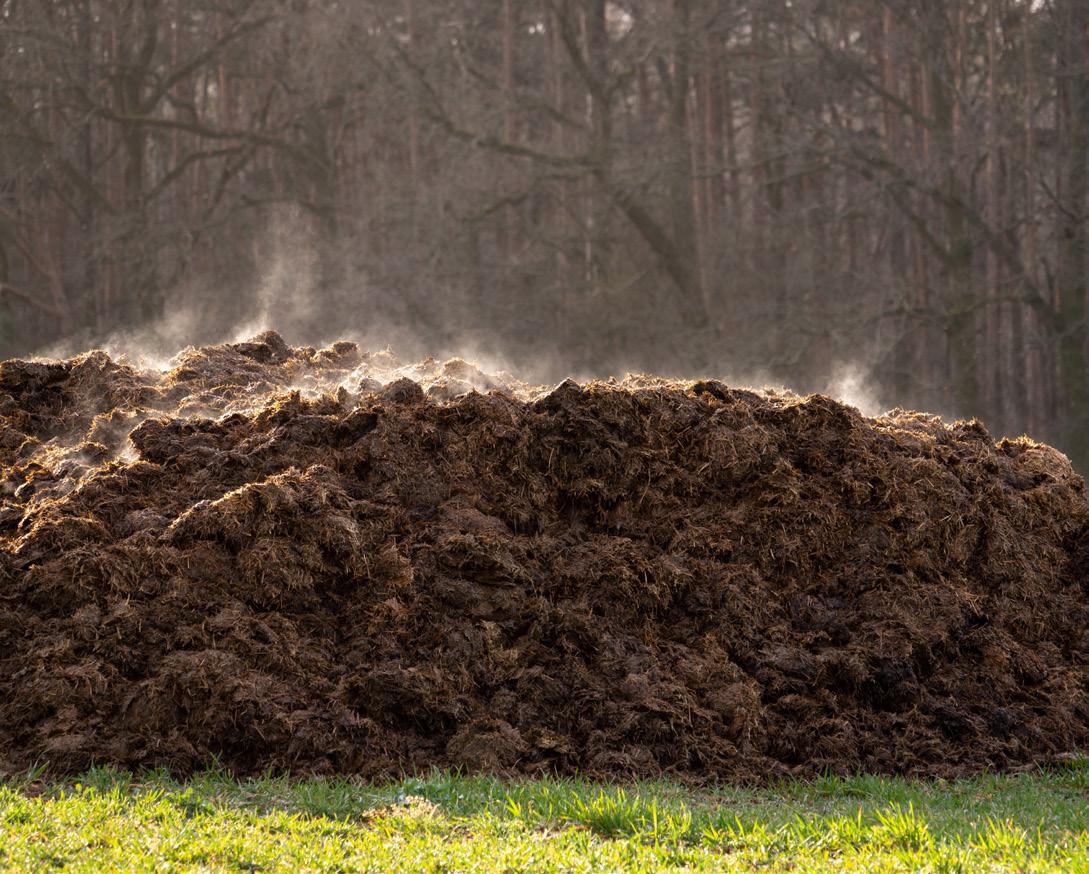

UW-MADISON DIVISION OF ExTENSION’S RESILIENT FARMS AND FAMILIES: https://farms.extension.wisc.edu/ farmstress/
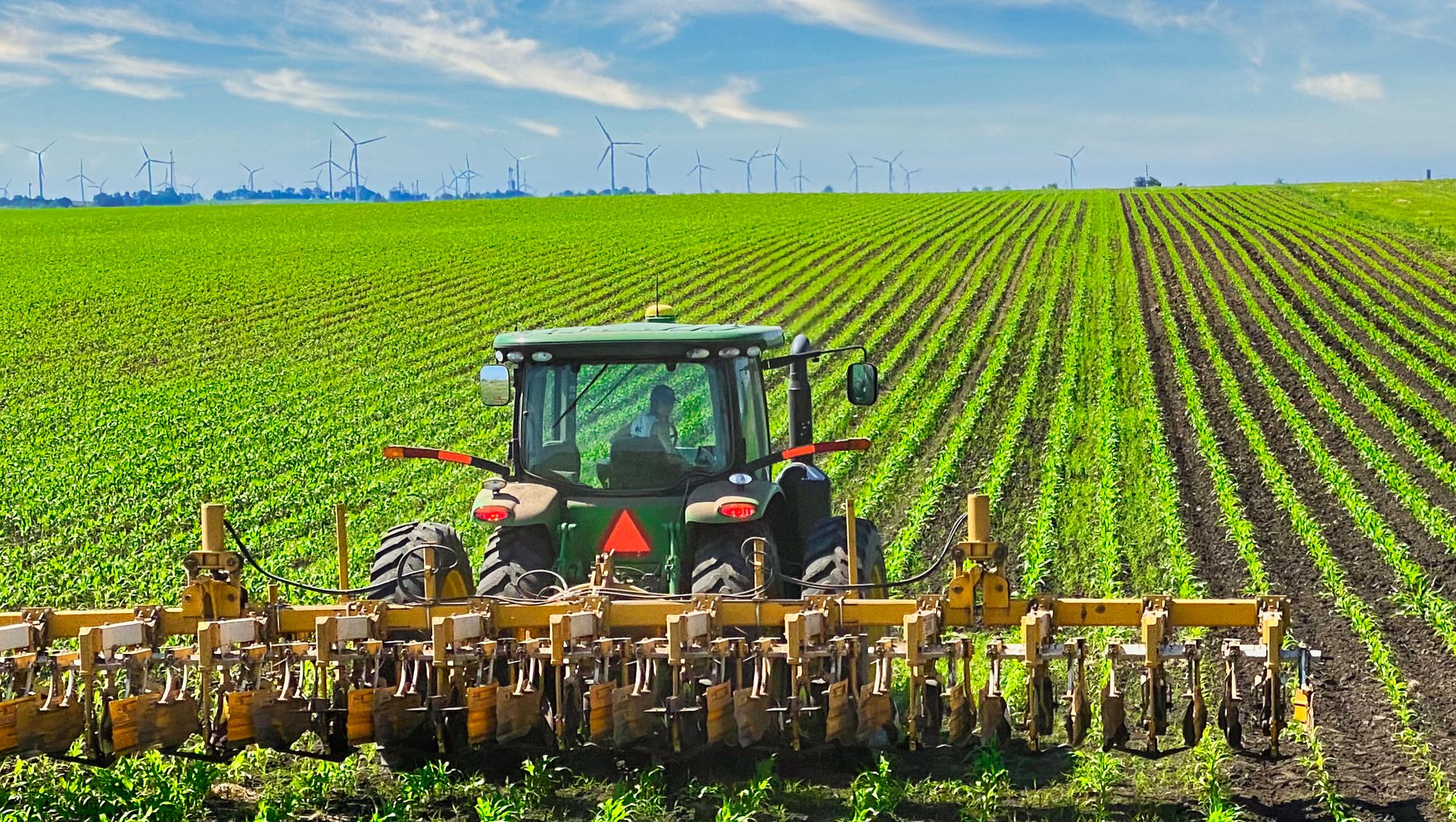
DATCp FARMER WELLNESS pROGRAM: https:// datcp.wi.gov/Pages/AgDevelopment/ FarmerMentalHealthWellness.aspx
FARMWELL WISCONSIN: https://farmwellwi.org/
WISCONSIN FARM BUREAU FEDERATION S FARM NEIGHBORS CARE CAMpAIGN: https://wfbf.com/farmneighbors-care-campaign/
Funding for this was made possible, in part, by the Wisconsin De partment of Agriculture, Trade and Consumer Protection (DATCP). The views expressed in written materials, publications, speakers, and moderators do not necessarily reflect the official policies of DATCP; nor does any mention of trade names, commercial practices, or orga nization imply endorsement by the State of Wisconsin.

M ar BL e S eed. org | 25
402-371-1400 AGlobalEquipmentCompany,Inc. www.henkebuffalo.com
Pit N’ Pen CALL FOR A COPY OF CATALOG: 800-347-1566 | WWW.FERTRELL.COM PRODUCER OF NATURAL & ORGANIC FEED SUPPLEMENTS & FERTILIZERS Are you tired of all the back-breaking work of cleaning out box stalls? Pit and Pen will help to ease that work by dissolving the solids and digesting the fibers in manure. By using Pit and Pen you will be helping to break down the manure into a more soil-friendly and neighbor-friendly asset from your farm. One 25 lb box treats up to 500,000 gallons of liquid manure or up to 35,000 cubic feet of dry bedding making pack manure. 10% off during November Restrictions Apply
Organic
and Specialty Crop Insurance Updates from the USDA Risk Management Agency
By Pamela stahlKe, amBer solder & miChael green
The United States Department of Agriculture’s Risk Management Agency’s (RMA) 10 Regional Offices are responsible for administering the Federal Crop Insurance Program for America’s farmers and ranchers at the local level. The mission of our agency is to provide effective, mar ket-based risk management tools for agricultural producers. Namely, this is the public-private partnership to deliver crop insurance. The St. Paul Regional Office serves this mission as the public face of our agency in Iowa, Minnesota, and Wisconsin by engaging stakeholders to guide on-going improvement and educa tion for crop insurance.
As part of our efforts to provide effective risk management tools we are proud to partner with stakehold ers, such as Marbleseed, to engage and educate shared stakeholders on relevant topics that are important to producers in our region. Accordingly, we are happy to report on some re cent updates to the crop insurance program for organic, specialty and diversified growers. Understanding crop insurance offerings and avail able initiatives is critical to providing an effective farm safety net. In this article, we will share informa tion about a new initiative RMA is offering called Transitional Organic Grower Assistance, (TOGA) that is
only available to organic growers. Additionally, we will also explain updates to the existing policies of Micro Farm and Whole Farm Revenue Protection that include links to webinars for opportunities to join the “RMA Roadshow” live!
TRANSITIONAL ORGANIC GROWER ASSISTANCE “TOGA”
The Risk Management Agency’s nationwide Transitional Organic Grower Assistance (TOGA) program is part of USDA’s Organic Transition Initiative (farmers.gov/organic-tran sition-initiative), a collection of programs to build more and better markets for American growers and consumers and improve the re silience of the food supply chain. TOGA provides premium assistance to eligible producers who insure grain and feed crops in transition to organic or certified organic during the 2023 reinsurance year and is available nationwide. Eligible organic grain and feed crops are: alfalfa seed, barley, buckwheat, canola, corn, cultivated wild rice, dry beans, dry peas, flax, forage production, forage seeding, fresh market sweet corn, grain sorghum, hybrid corn seed, hybrid popcorn seed, hybrid sorghum seed, hybrid sweet corn seed, millet, oats, crops insured under the Pasture, Rangeland, and Forage policy, peanuts, popcorn, rice, rye, safflower, sesame, silage sorghum, soybeans, sunflowers, sweet corn, triticale, and wheat.
No sign-up is required to participate in TOGA. The premium assistance will automatically apply to the 2023 reinsurance year billing statements, which covers applicable policies with sales closing dates from July 1, 2022, to June 30, 2023. TOGA benefits will not apply to Catastrophic Risk Protection (CAT) policies as these policies do not have a produc er premium. Therefore, to be eligible to receive the benefit, producers must purchase a coverage policy that has a producer premium and report eligible acres with their crop insurance agent on their acreage report.
The TOGA benefit is limited to the total premium owed. If the calculated subsidy amount is greater than the bill, the remaining subsidy will not be paid to the producer as the producer premium is zero. Further, premium assistance from other premium subsidy programs can be received in addition to TOGA. It’s important to note that the TOGA premium subsidy only applies to the underlying policy. Insureds should be aware that the TOGA subsidy will not apply on premium owed on Enhanced Coverage Option (ECO), Supplemental Coverage Option (SCO), Post-Application Coverage Endorsement (PACE), and Margin Protection (MP). For example, if a producer purchases a wheat policy and SCO, TOGA will only apply to the wheat policy.
A producer eligible for TOGA will receive the following discounts on their premium billing statement:
• 10 percentage points of premium subsidy for all crops in transition to certified organic;
• $5 per insured acre premium assis tance for certified organic grain and feed crops; and
• 10 percentage points of premium subsidy for all Whole Farm Revenue Protection (WFRP) policies covering crops in transition to certified organic or certified organic crops.
Producers who have additional in dividual crop insurance policies will also receive the applicable premium assistance on those policies.

organic B roadca ST er | 26
For more information about TOGA, please visit farmers. gov/organic-transition-initiative.
WHOLE-FARM REVENUE pROTECTION
Designed as a flexible option to serve many different types of producers, Whole-Farm Revenue Protection (WFRP) provides a risk management safety net for all commodities on the farm under one insurance policy and is available in all counties nationwide. This insur ance plan is tailored for any farm with up to $17 million in insured revenue, including farms with specialty or organic commodities (both crops and livestock), or those marketing to local, regional, farm-identity preserved, specialty, or direct markets. The policy has recently been updated to make it more flexible and accessible to pro ducers beginning with the 2023 crop year. Further, the Micro Farm program, offered through WFRP, provides insurance coverage with reduced requirements, which supports the needs of smaller growers. Producers with farm operations up to $350,000 in approved revenue can get coverage using the Micro Farm program.
Some reasons to consider WFRP:
• Insuring two or more commodities under this poli cy provides a discount to the premium as well as an additional subsidy that further reduces the amount of premium paid;
• It provides coverage for all commodities, which is especially important if the crop or livestock produced is otherwise not insurable;
• Operations may be allowed to increase their approved revenue amount beyond their actual revenue history to account for the growth trends in their revenue.
RMA has also implemented updates to the WFRP pro gram for the 2023 crop year with the purpose of simpli fying WFRP based upon feedback received. Producers can now report and self-certify yields at the beginning of the year for commodities without other insurance policies. This change was made in an effort to reduce the paperwork burden required to apply for WFRP. Along a similar vein, expense reporting has also been elimi nated. Now, WFRP will reduce the expected revenue of commodities a producer is unable to plant to 60%, which is similar to prevented planting for other insurance programs. These are just the most recent changes made to expand coverage and offer flexibilities for organic and other specialty growers under this policy. Questions about WFRP can be found on the WFRP Frequently Asked Questions Page at: www.rma.usda.gov/en/NewsRoom/Frequently-Asked-Questions/Whole-Farm-Reve nue-Protection-Plan-2023.
The Micro Farm program, offered through WFRP, pro vides insurance coverage for producers with farm operations up to $350,000 in approved revenue. This is an expanded limit that was formerly $100,000 in approved revenue the previous crop year. Similar to WFRP, Micro Farm is also designed to protect a diversified farm under one safety net, but provides insurance
coverage with reduced requirements, which supports the needs of smaller growers. Additional information about the Micro Farm Program can be found at this link: www. rma.usda.gov/en/Fact-Sheets/National-Fact-Sheets/Mi cro-Farm-Program.
Producers can learn more about these insurance options by speaking to a crop insurance agent or by attending an upcoming “Road Show” workshop virtually or in-per son. Whole Farm and Micro Farm Road Show events are workshops hosted by RMA for agricultural producers on the Microsoft Teams platform and the purpose is to help producers learn more about these insurance options. Further information can be found at the following link: www.rma.usda.gov/Topics/Outreach-and-Education/ RMA-Roadshow. The next Road Show events will occur on:
• Tuesday, November 15 at 8:00 p.m. PT
• Tuesday, December 13 at 11:00 a.m. ET
Several in-person Road Show workshops are also in the beginning stages of development for early 2023, and one is planned in the St. Paul Region. We recommend visiting our Regional Office webpage for information about this and other important crop insurance updates in the coming months. USDA Risk Management Agency St. Paul Regional Office (www.rma.usda.gov/en/RMALocal/Field-Offices/Regional-Offices/St-Paul-Minneso ta-Regional-Office-Page).
Finally, if you are new to crop insurance it’s important to know that crop insurance is sold and delivered sole ly through private crop insurance agents. A list of crop insurance agents is available at all USDA Service Centers and online at the RMA Agent Locator Tool (rma.usda. gov/Information-Tools/Agent-Locator-Page). Additional ly, if you want to learn more about crop insurance or find information about other RMA programs please visit our RMA public page at rma.usda.gov.
To find contact information for this or other USDA Risk Management Agency offices go to the RMA Regional Office Locator and click on your state Regional Offic es | RMA (usda.gov) (www.rma.usda.gov/RMALocal/ Field-Offices/Regional-Offices).
At RMA we welcome questions and feedback on the crop insurance program. Please feel free to reach out by email or by phone. Wishing you a safe and productive year ahead.
RMA St. Paul Regional Office Email: RSOMN@usda.gov RMA St. Paul Regional Office Phone: 651-290-3304
Pamela Stahlke is the Director of the USDA Risk Manage ment Agency based in St. Paul, Minnesota administering the federal crop insurance program in Iowa, Minnesota, and Wisconsin. Risk Management Specialist, Amber Solder is the organic subject matter expert (SME), and Michael Greene is the Micro/Whole Farm and Specialty Crop (SME).
M ar BL e S eed. org | 27
By Julia Barton
Organic transition is no joke. On paper, it takes 3 years, or 36 months, from the last date a prohibited sub stance (or one not allowed for use in organic production) was applied to a field. But in practice it’s a much longer process. Growers think about transitioning long before they take the plunge, gathering information, assessing markets and infrastructure, both on-farm and in the community. They ask existing organic growers about their systems and rotations, try to find organic processing facilities, and check out organic certifiers- their fees, their paperwork, their policies, and their customer service. They think through onfarm logistics: storage, access to the right equipment, seed, and other inputs, and equipment cleaning. They read up and attend farm tours, workshops, and field days on organ ic management systems. They study conservation grazing. They look into appropriate cultivation techniques and weed zappers, paper pot transplanters, mulching options, and irrigation systems. Transitioning farmers think through re cordkeeping, and weigh whether all the extra work is worth it. They might even talk with their crop insurance agent. They might get in touch with the Natural Resource Conser vation Service (NRCS) to see what programs they have that might be helpful. They pencil out the numbers. They pencil it out again.
A lot of this thinking and exploration happens a year or three before the clock starts ticking on the 36 months of official transition, and these systems will be honed well-after an organic certificate is achieved. Indeed, many organic growers transition land little by little, and animals only once access to enough certified grain ground, pasture, or nearby organic processing facilities have been secured. Some operators take a full 10+ years to transition all their land, and some who have long held organic certificates, pick up new fields and transition additional land to bring a colleague or family member, sometimes the next genera
tion, home to farm. Because organic systems are rooted in the agroecological context of a specific place, all of this is even more compli cated. Maybe a particular rotation or practice worked on the farm where the now grown farmer grew up, but the land she could afford has a totally different type of soil and presents different challenges. Likely, organic manage ment requires more work than that to which a previously conventional operator is accustomed. Maybe the farmer loves farming but finds the paperwork to be overwhelming. Maybe she needs help.
The good news is—you don’t have to do transition alone. There are people who spend their days providing help to transitioning operators before and during transition and continue to support them after organic certification is achieved. These professionals wear different hats and are called by different names- educators, consultants, agrono mists, etc., but they share a common goal: to make organic certification more accessible and less scary. They support farmers in achieving their goals of sustainable land man agement and organic certification; in accessing markets that help increase the viability of their farm; to weigh the options and find a good fit for their farm, family, and busi ness; to support the stewardship of the land, the healthy food that comes from it, and the healthier communities that result.
The other good news is that these folks are connected with one another. After years of doing this independently, the Transition Support Group (pun intended) was formed, so we can support one another in supporting farmers in tran sition. We intend to cultivate this network to help us better meet farmer needs, create and amplify the right resources at the right times, and to identify barriers that are in farm ers’ way so that we can help to address them.
Different organizations have met farmers’ needs in various ways over time, based on geography, the farmer popu lation being served, and the expertise of the transitional educator and organization. Some transition services focus on regional production practices, whereas others focus on navigating the certification paperwork and developing the farmers’ first Organic System Plan. Some include materials review services by a certifier so farmers know what inputs they can and cannot use, while others connect farmers with mentors to walk them through the transition process. Some transition support services show up on the farm, and some work remotely over the phone or computer. Some focus on specific populations- for example, some have gotten particularly good at working with grain growers, Plain community operators, or dairies. Still others work with mixed veggie producers in a particular region. Some even offer grant funding to support transitioning operators take the leap while mitigating some of the financial risk.
The common thread is a desire to help farmers successfully transition to organic production, not just for the 36 months of official transition, but for the long haul. We want to meet the farmer where they are and help them get to where

organic B roadca ST er | 28
INSIDE ORGANICS PHOTO CREDIT: MARKUS SPISKE
TranSiTion SupporT group
they want to be.
Currently, the Transition Support Group consists of 13 or ganizations who have already been supporting transition ing and organic producers, some for nearly two decades already. It’s our hope that this network will continue to grow and serve transitioning and organic producers over time. By working together, we can learn from one another and amplify existing resources and opportunities, identify and break down common barriers, support more transitioning and organic producers in achieving their goals, and support more acres being managed organically.
Through the federal funding coming down the pike, there will soon be new professionals supporting transitioning producers all over the nation. It is our hope that this group can be a network for these folks too. If you’re providing this support to transitioning operators currently, or if you’re interested in learning from this group, please contact Julia Barton at the Ohio Ecological Food and Farm Association (julia@oeffa.org), and we’ll be sure to get you connected.
Julia Barton is an Organic Policy Specialist with the Ohio Ecological Food and Farm Association where she has supported farmers transitioning to organic for the last 8 years. In addition to her OEFFA work, Julia and her husband, Patrick Turner, run Octagon Acres, an organic vegetable operation and home stead in northeast Ohio.
Save The daTe for The
FEBRUARY 23-25, 2023 LA CROSSE, WI
Scholarships for the Organic Farming Conference are available through the Dave J. Engel Memorial Fund or the Chris Blanchard Scholarship Fund.
DAVE J. ENGEL FUND
Established by the Midwest Organic and Sustainable Education Service (now Marbleseed) in memory of Dave Engel. Dave served the organic community in many ways, and poured his heart and soul into every endeavor, whether it was as an organic farmer, an organic inspector, or as executive director of four organic certification agencies. The Engel family has worked with MOSES (now Marbleseed) to establish a scholarship fund in Dave’s name to send farmers to the annual Marbleseed Organic Farming Conference, which Dave helped establish. Marbleseed desires to honor Dave’s legacy and extend his impact on the world by facilitating the fund and awarding scholar ships to a new generation of organic farmers. Many current and future organic farmers will be able to thank Dave for his lifetime contributions.
CHRIS BLANCHARD FUND
Organic Certification

Established by the Midwest Organic and Sustain able Education Service (now Marbleseed) to honor Chris Blanchard, former farmer, consultant, educator and MOSES (now Marbleseed) employee. Chris was instrumental in the growth and development of the Marbleseed Organic Farming Conference. Chris, his family, and his friends have worked with Marbleseed to establish a scholarship fund in Chris’ name to send farmers to the annual Marbleseed Organic Farming Conference. Marbleseed desires to honor Chris’ legacy and extend his impact on the world by facilitating the fund and awarding scholarships to a new generation of organic farmers. Many current and future organic farmers will be able to thank Chris for his lifetime contributions.
Contribute to Scholarship funds here: https://marble seed.org/support/donate

VOLUNTEER OppORTUNITIES
Interested in volunteering for the 2023 Organic Farm ing Conference in La Crosse, WI?
Email info@marbleseed.org for more information.
M ar BL e S eed. org | 29
CROP IMPROVEMENT ASSOCIATION
• HANDLERS • PROCESSORS • PRODUCERS
WILD CROP
LIVESTOCK
MINNESOTA
1900 HENDON AVE, SAINT PAUL MN 55108 855-213-4461 www.mciaorganic.org
•
•
Serving the Upper Midwest Ensuring Organic Integrity Since 2002 local responsive committed to service

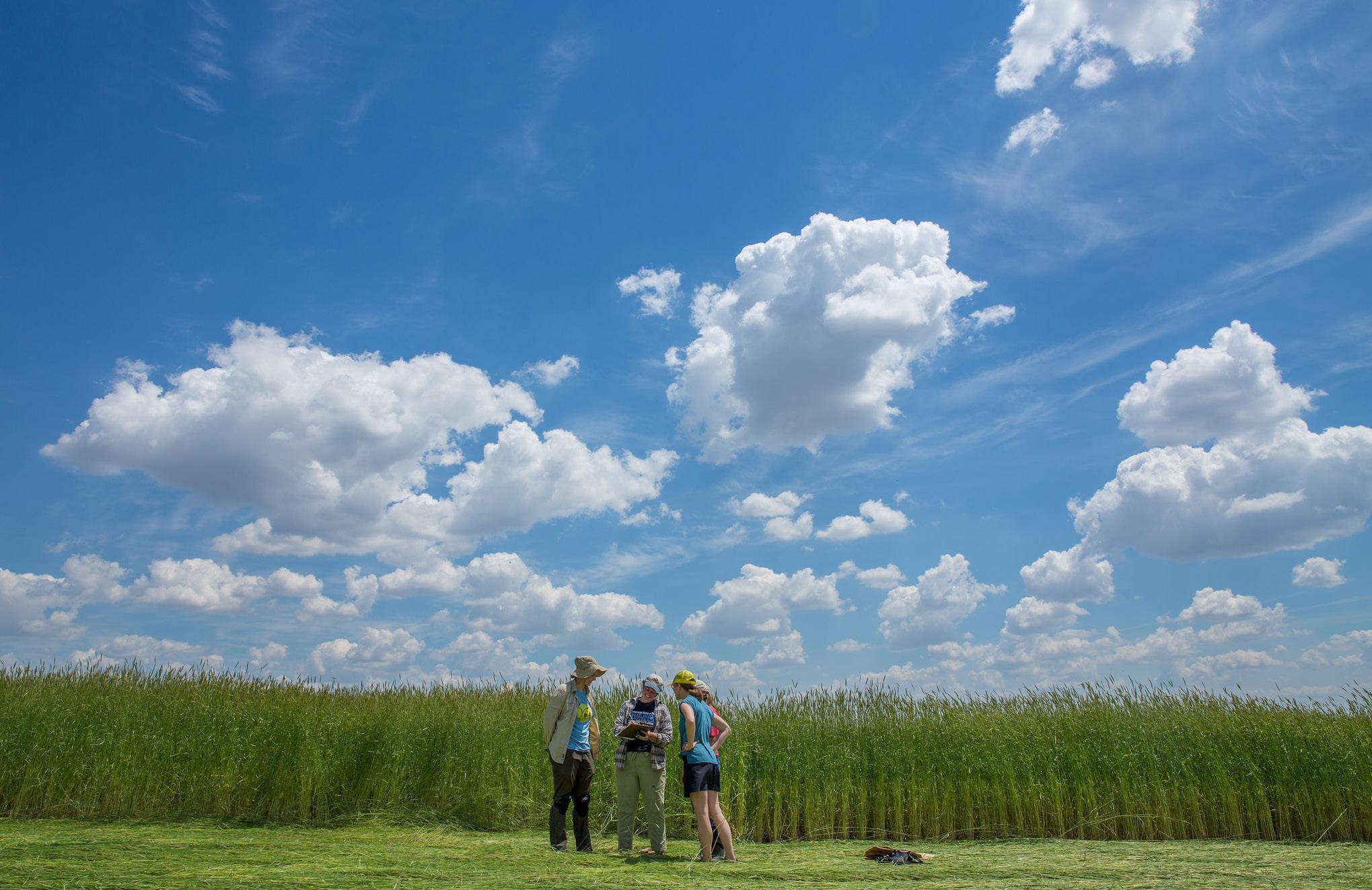




organic B roadca ST er | 30 TO Explore two new Organic Agriculture Certificates 3 core courses / 15 credits / 44 electives In-person undergraduate instruction Hands-on experiences Connections with organic industry partners 9 courses / 27 credits Entirely online -participate from anywhere! Standalone program Financial aid available Mind Skills Future TRANSITION YOUR Visit: ecampus.oregonstate.edu/online-degrees/ undergraduate/certificates/organic-farming-systems/ Visit: uworganic.wisc.edu/certificate/ ORGANIC








M ar BL e S eed. org | 31 Your trusted buyer of organic grains. We’re in the market for organic and non-GMO grains. Corn • Soybeans • Wheat Connect with one of our traders to learn more. 833.657.5790 www.sunrisefoods.com Tony Schiller Luke Doerneman Nick Nelson Harrowing, exactly what you need to manage weeds Contact Treffler Man@Machine www organicmachinery net treffler@manatmachine com +31 6 300 35 123
By raChel henderson
Fruit, in particular apples and other tree fruits, are often ranked as top users of pesticides and other inputs in conventional manage ment. Many of us have access to trees, but not full control over how they’re cared for, resulting in a frustrating situation where those sweet treats aren’t grown the way we’d like. For those of us committed to organics, it’s tempting to try to get people to make changes to their trees. The people making those decisions may be reluctant to change, unconvinced that organic practices will work, or simply unaware of their options.
The first step toward making a change is having a con versation about making a switch, to understand what they’re using inputs FOR. Many people unfamiliar with fruit production may lump all sprays into a single cat egory, and it’s important to know what’s used for what before we attempt to come up with an alternative plan.
FUNGAL DISEASE
Nearly all perennial fruits suffer from some type of fun gal disease in our warm, humid summers, and fungicides are one of the most commonly used type of input in fruit production. In organic production, we use allowed inputs that include elemental copper or sulfur. These can be effective, but often offer less complete protection than their conventional counterparts. That’s a common reason many people cite for avoiding the switch to organics, since fungal disease results in much less salable fruit. However, as a rule, organic growers use those fungicide products in conjunction with management practices. We monitor for degree days and moisture lev els, and more than anything, clean up anything that will be a disease vector. This leads to a good suggestion for lessening dependence on conventional inputs: a holistic approach can help growers cut out some applications.


Organic growers often plant disease-resistant varieties as a first line of defense, which may not be helpful when discussing converting existing plantings but might be an amenable suggestion if a grower is expanding or re-planting. Removing fallen fruit from the orchard is another important strategy — many people would prob ably welcome volunteer help with this. Late season (or early spring) mowing grinds up the fallen leaves and also helps destroy fungal spores, helping to break the cycle. Applications of compost tea after mowing can help break down leaf litter, besides enriching the soil.
INVERTEBRATE pESTS
Like fungal disease, our midwestern summers provide a good environment for many different insects. And similar to fungicides, our organic options pack less of a punch than conventional insecticides. For this reason, any organic sprays must be accompanied by a rather intensive monitoring and management program. This starts with positively identifying the culprits, under standing something about their lifecycle, and using traps or other monitoring techniques to determine their presence in the orchard. A lot of work! For the most commonly grown fruit, that information can be readily available. Michigan State University’s Integrated Pest Management (IPM) program has many readily available resources, both online and in print, that can help es tablish that base of knowledge. (https://www.canr.msu. edu/ipm) One advantage is that IPM practices are useful even in a conventional orchard setting, helping to reduce the number of sprays needed, and preventing pesticide resistance. These are practices that a grower can benefit from even without committing fully to organic. A man agement-intensive approach might help reduce reliance on sprays, leading a grower to be more interested in eventually switching to organic options.
GROUNDCOVER MANAGEMENT
Fruit trees, as well as smaller fruit, have shallow roots and are susceptible to competition from grass and weeds, slowing their growth and lowering production. A common conventional approach to this problem is the maintenance of herbicide strips — killing everything that grows around the root zone. Most commonly, in organic settings growers use mulch, periodic cultivation, or a combination of both. Cultivation, of course, comes with its own drawbacks, and you can learn more about those drawbacks here: https://www.canr.msu.edu/news/ combat_herbicide_resistance_by_using_strip_cultiva tion_for_weed_management.
Mulch can be either organic mulch like wood chips or straw, or a plastic or paper option. If the grower is inter ested in pursuing organic certification, care needs to be taken to make sure that anything used can be verified by the source as free of prohibited materials, but otherwise mulch can be an inexpensive and relatively low-labor option.
organic B roadca ST er | 32
ASk A SpECIALIST
Depending on your relationship with the fruit grower, it can be helpful to offer to take on some of this learning, monitoring, or management, as that is bound to be a limiting factor. It can also help to think of this as a longterm project and hope to help convince the grower to take on incremental change.

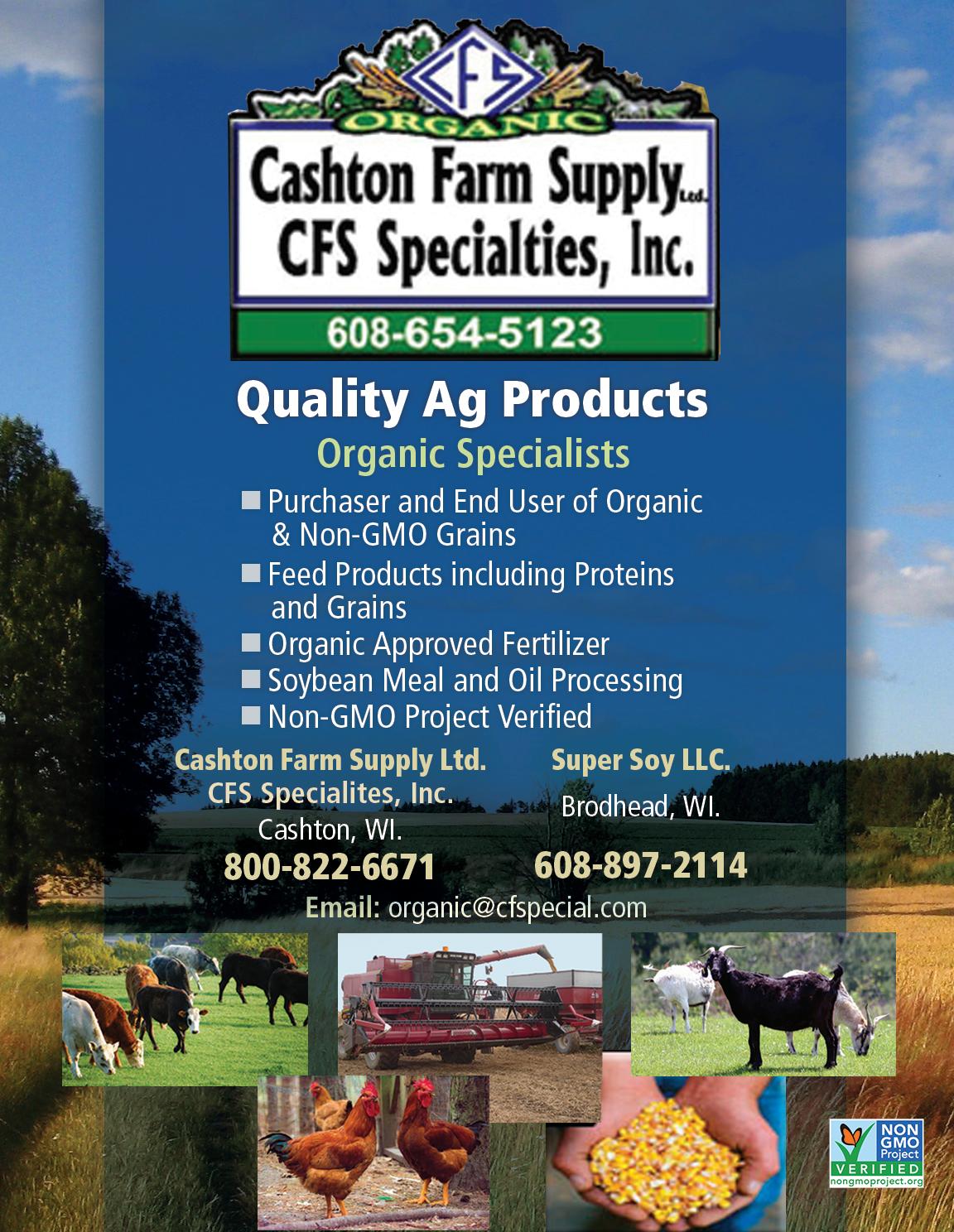

Rachel Henderson is a Marbleseed Organic Specialist. Rachel and her husband, Anton, own and operate Mary Dirty Face Farm near Menomonie, Wisconsin. They grow 9 acres of certified organic berries, apples, pears, and plums. They’ve recently added livestock as an additional enterprise for the farm. Rachel is past coordinator of the Organic Fruit Growers Association.

IHOTEL & CONFERENCE CENTER | CHAMPAIGN, ILLINOIS
3
Learn about: organic certification, crop rotations, identifying yield thieves, market trends, small grains research, tillage practices, and more!
ASk A SpECIALIST! Marbleseed Organic Specialists answer your questions about organic production and certification. CALL Organic Answer Line: 888-906-6737 SUBMIT Submit questions at marbleseed.org/ask DOWNLOAD Find Fact Sheets at marbleseed.org/organic-facts
pIpELINE FOODS “CLAWBACk” LETTERS
On July 8, 2021, organic and non-GMO grain buyer Pipeline Foods filed for Chapter 11 bankruptcy. Earlier this year, the company’s bankruptcy proceeding, was finalized by a court in Delaware. Unfortunately, for some organic farmers who sold to Pipeline, this situation is still not behind them. This sum mer, some farmers have received “clawback” letters from a law firm in Minnesota serving as the trustee for Pipeline Foods’ liquidation. Unfortunately, this seems to be a legitimate part of the bankruptcy process. There are a few things you could do if you receive one of these letters. Here are some things you can do if you have received one of these letters: Gather information about your history with Pipeline Foods, contact an attorney, let OFA know if you have received one of these letters. They will try to keep people updated and share resources about ways to respond. You can email Kate Mendenhall, OFA Executive Director, kate@organicfarmersassociation.org or fill out a short survey about your situation. Knowing how many farmers have been affected will help us strategize on the best way to help you as a whole. https://tinyurl.com/28x2k6es
NCR-SARE IS ACCEpTING ONLINE SUBMISSIONS FOR THE FARMER RANCHER GRANT pROGRAM
More information about the online submission system can be found in the call for proposals. Farmer Rancher grants are for ideas initiated by farmers and ranchers and are offered as individual grants ($15,000 maximum) or team grants for two or more farmers or ranchers who are working together ($30,000 maximum). NCR-SARE expects to fund about 40 projects in the twelve-state North Central Region with this call. A total of approximately $720,000 is available for this program. Farmer Rancher grants are for ideas initiated by farmers and ranchers and are offered as individual grants ($15,000 maximum) or team grants for two or more farmers/ ranchers who are working together ($30,000 maximum). Projects may last up to 23 months. About 40 projects are funded each year. Grants support producers who are protect ing natural resources, enhancing communities, and boosting profitability. Outreach and networking multiply farmer and rancher project results. NCR-SARE uses an online grant ap plication system for this program. More information is available in the call for proposals. The NCR-SARE Administrative Council makes grant-making decisions. Applications are due December 1. https://tinyurl.com/37av663n
USDA ExTENDS COMMENT pERIOD FOR TWO ORGANIC RULES
USDA values public comments as a vital step in the rulemak ing process. Public comments offer key insights to help USDA best understand and balance needs across the organic sector. In response to stakeholder requests, USDA is extending the public comment periods for the Proposed Rule on Organic Livestock and Poultry Standards (OLPS) and the Advance Notice of Proposed Rulemaking (ANPR) on inert ingredients in pesticides for organic production. Organic Livestock and Poultry Standards: Proposed Rule. This rule would change pro visions in the USDA organic regulations for livestock handling and transport for slaughter; avian living conditions; livestock care and production practices; and mammalian living conditions. The comment period is being extended by 30 days.
The submission deadline is now November 10, 2022. Inert Ingredients in Pesticides for Organic Production: Advance Notice of Proposed Rulemaking. This notice asks the public to comment on options to update how the National List of Allowed and Prohibited Substances (National List) references inert ingredients in pesticides allowed for organic production. The comment period is being extended by 60 days. The sub mission deadline is now December 31, 2022. https://tinyurl. com/3tfcnp6r
BAN DESTRUCTIVE DICAMBA
Dicamba is an herbicide that is notorious for getting picked up by the wind, drifting miles from the intended target – even days after it’s sprayed. When these dangerous chemicals land, they can wipe out crops on neighboring farms and create toxic impacts for surrounding communities. Dicamba has been linked to several types of cancer, harm to wildlife and serious damage to any crops that aren’t engineered to be dicamba-re sistant. PIRG’s campaign is called Ban Destructive Dicamba and they’re building a coalition of farmers, agricultural scien tists, victims of herbicide drift, and other stakeholders to call on the EPA to ban dicamba. Learn more here: https://tinyurl. com/4rhprzme.
THE pEOpLE’S GARDEN
People’s Gardens grow fresh, healthy food and support a resilient, local food system; teach people how to garden using sustainable practices; and nurture habitat for pollinators and wildlife, and greenspace for neighbors to gather and enjoy. People’s Gardens all: Benefit the community by providing food, beautification, arts, wildlife habitat, education, green space, tree canopy, recreation, volunteer opportunities, Are a collaborative effort involving neighbors, co-workers, food pan tries, master gardeners, conservation districts, USDA agencies, veterans, youth organizations, seniors, faith-based groups, or others, Incorporate sustainable practices such as rain barrels or micro-irrigation, composting, cover crops, pest management, bat houses or insect hotels, and/or native plants, and Edu cate the public about sustainable practices and the benefit of local food systems through signage, classes, events, outreach materials, websites, and youth field trips. https://tinyurl.com/ mur47ecu
USDA OFFERING GRANT pROGRAM ADDRESSING LABOR SHORTAGES IN AGRICULTURE
USDA is offering a new grant program focused on addressing labor shortages in agriculture, reducing irregular migration through expansion of legal pathways, and improving labor protections for farmworkers. The grant program will use up to $65 million in American Rescue Plan Act funding to provide support for agricultural employers in implementing robust labor standards to promote a safe, healthy work environment for both U.S. workers and workers hired from Northern Central American countries under the seasonal H-2A visa program. https://tinyurl.com/yy3j44zt.
MINNESOTA BEGINNING FARMER TAx CREDIT
The Minnesota Beginning Farmer Tax Credit provides tax credits for the rent or sale of farmland or a variety of farm assets to beginning farmers. This includes incentives for the sale of farmland. A Beginning Farmer is defined as: a Minneso ta resident (Residency Fact Sheet, PDF) who is seeking entry, or has entered into farming within the last 10 years, a farmer who will provide the majority of the labor and management of the farm that is located in Minnesota, a farmer who has
organic B roadca ST er | 34
NEWS BRIEFS
adequate experience and knowledge of the type of farming for which they seek assistance from the Rural Finance Au thority, a farmer who can provide positive projected earnings statements, a farmer who is not directly related to the owner of the agricultural asset. This includes parents, grandparents, brothers, sisters, spouses, children, and grandchildren. Legal adoption shall be considered in full effect, or a farmer who has a net worth that does not exceed the limit provided under section 41B.03, subdivision 3, paragraph (a), clause (2). This limit is $903,000 in 2022. The beginning farmer may need to participate in an approved financial management program. Costs of financial management programs up to a maximum of $1,500 per year (for up to 3 years) may also be eligible for a tax credit. The financial management credit need not be tied to any agricultural asset sale or rental. Read more: https:// tinyurl.com/t884c6cp
HEIRS’ pROpERTY DETAILS
Heirs’ property is family-owned land that is jointly owned by descendants of a deceased person whose estate did not clear probate. The descendants, or heirs, have the right to use the property, but they do not have a clear or marketable title to the property since the estate issues remain unresolved. Land is passed down without a will or deed to prove ownership. Each successive generation generally results in more heirs being added to the land inheritance. The absence of the deed or will becomes more complicated and grows by generation as time and people pass. Without proof of ownership, it may become difficult for heirs to obtain federal benefits for farms and could also force partition sales by third parties. The 2018 Farm Bill authorized alternative documentation for heirs’ prop erty operators to establish a farm number. A farm number is required to be eligible for many different USDA programs, including lending, disaster relief programs, and participation in county committees. Learn more about heirs’ property in this “Ask the Expert” interview with Farm Service Agency’s J. Latrice Hill: https://tinyurl.com/c6zv8vsv
AppLY FOR THE 16TH YEAR OF MARBLESEED’S FARM ER TO-FARMER MENTORSHIp pROGRAM
Marbleseed Mentor and Mentee Applications are open! Apply for the 16th year of the Farmer-to-Farmer Mentorship Pro gram. You will gain, 12 months of mentorship, 1:1 guidance from an experienced organic farmer near you, learn best prac tices for your type of farming operation, learn how to prepare your farm ready for organic certification and get free registra tion to the Marbleseed Organic Farming Conference. Cost to be mentored is $350 and includes complimentary admission to the Marbleseed Organic Farming Conference at the start and end of your mentorship. Payment is due upon acceptance into the program. Applicants must have been operating their farm business for at least one year. Learn more and apply: https://tinyurl.com/yh8u6n47
CONGRATULATIONS CARMEN FERNHOLz!
Carmen Fernholz, a pillar of Minnesota’s farming community, was recently honored with the Rodale Institute’s 2022 Organic Pioneer Award. Recognized for his leadership in “changing the landscape of regenerative organic agriculture for the better,” he is one of four recipients this year. Carmen is also one of Marbleseed’s Organic Specialists. Carmen has been growing certified organic grain and forage crops at A-Frame Farm in western Minnesota since 1975 and has a wealth of knowledge on production, cover crops, and weed and fertility manage ment. Carmen is involved with research at the University of
Minnesota. He and his wife, Sally, were the 2005 Marbleseed Organic Farmers of the Year. Read more: https://tinyurl.com/ mtyzcmkk.
MARBLESEED AWARDED NCR-SARE SUSTAINABLE AGRI CULTURE GRANT
We are thrilled that Marbleseed is the recipient of a Pro fessional Development grant from NCR-SARE, The North Central Region Sustainable Agriculture Research and Educa tion Program. We were awarded $88,978 for “Educational Methods for Farmer Self-Organizing.” NCR-Sare’s Professional Development Program competitive grants emphasize training agricultural educators in extension, the Natural Resources Conservation Service, non-profit organizations, and other public and private sector organizations. NCR-SARE’s Admin istrative Council (AC) members decide which projects will receive SARE funds. A collection of farm and non-farm citi zens, the AC includes a diverse mix of agricultural stakeholders in the region. Council members hail from regional farms and ranches, the Cooperative Extension Service, Universities, Federal Agencies, and non-profits organizations. “This project will enable Marbleseed to share skills and understanding of popular education methods that center farmers as learners. Honoring the experience of farmers in our educational pro grams is a way to democratize our work. In every interaction the ‘teachers’ also become learners.” Marbleseed will be pro viding training in these methods to ag professionals starting in early January. Additionally, registration to the annual Marble seed Organic Farming Conference will be provided for Group Leaders.” Read more about the other projects recommended for funding here: https://northcentral.sare.org/grants/applyfor-a-grant/2022 ENC projects for Marie.xlsx (sare.org)
M ar BL e S eed. org | 35
MOSAORGANIC.ORG | 844-637-2526 Practical, reliable and friendly organic certi cation services
COMMUNITY CALENDAR
BLAzING TRAILS THROUGH THE JUNGLE OF FOOD REGULATIONS TRAINING
Nov. 17 | 1 - 5 p.m. | Zoom
Dec. 15 | 5 - 9 p.m. | Zoom
Jan. 21 | 10 a.m. – 2 p.m. | Zoom
Registration is $10 and open to anyone with a passion for local farmers and local food. Possible attendees include SHIP coordinators, Extension educators, farm group leaders, school board members, school food service directors, economic development staff, public health staff, farmers, restaurant owners, and farmers’ market operators. Join trainers Jane Jewett and Kathy Zeman for 4-hours of important information. Anyone is welcome. Registration is now open at: www.mfma.org/Events.
THE EMERGING FARMERS CONFERENCE
Nov. 12 - Nov. 13 | Shoreview, Minn. | Free
The Emerging Farmers Conference is for new and emerging growers and producers. This conference is for farmers, by farmers, and led by farmers. The goal is to empower emerging farmers with knowledge, resources and connection. For the first time, this conference features field day! Saturday will be a day of learning, networking and story-sharing at Shoreview Community Center. Sunday will be a field day where farmers have the opportunity for hands-on learning. The field day will begin at the U of M St. Paul campus in the morning. You will board a coach bus that will take you around Minneapolis to explore food & agriculture opportunities in an urban setting. Choose from sessions including a commercial kitchen tour at The Good Acre, urban hydroponics freight farm tour at North Market, and a hands-on microgreen demo at the University of Minnesota Greenhouses.
EORGANIC FALL WEBINAR SERIES: NURTURING CITY SOILS FOR HEALTHY ORGANIC FARMS
Nov. 16 | 1 p.m. | Online
This webinar is the last in a series about Nurturing City Soils for Healthy Organic Vegetables. Topic: Combining Soil Amendments and Varietal Development to Prevent Pathogens and Heavy Metal Uptake. Register at https://oregonstate.zoom.us/webinar/register/WN_ NakrvB9hR8WXo9rhlfemWw.
BIG SOIL HEALTH EVENT
Dec. 5 - Dec. 6 | Cedar Falls, Iowa
The Big Soil Health Event provides an expected 800 farmers, rural landowners, and ag industry members with a ground-up educational experience. While many conferences inspire and teach, The Big Soil Health Event encourages and illuminates soil health practice adoption. It also provides practical bootson-the-ground training for not only new farmers and early adopters of regenerative ag, but landowners and industry professionals as well. RSVP here: https://www.agsoilregen. com/event-info/the-big-soil-health-event-2022
ECO-AG CONFERENCE & TRADE SHOW
Dec. 5 - 8 | Covington, Ken.
Hosted by ACRES. Register today to learn from ecoagriculture professionals, connect with peers and engage with the best trade show in the industry. Every year, we set a
new standard for innovative and practical learning in modern agriculture. Marbleseed has a discount code for this event! Enter MARBLESEED when checking out and receive 20% off registration. Register at https://ecoag.acresusa.com/fees-registration/ or call 1-800-355-5313.
pERENNIAL FARM GATHERING
Dec. 7-9 | Online
Hosted by the Savanna Institute. This premier Midwest event is available to global audiences every year! Join the 3-day virtual gathering of farmers, landowners and perennial enthusiasts from across the country. Share your work and learn from others who are committed to growing perennial agriculture for climate, conservation and economic vitality. Design, select plants and partner to create agroecological systems that regenerate the land and support communities. Register here: Perennial Farm Gathering 2022 | Savanna Institute
TECHNOLOGY FOR FARM OpERATORS
Dec. 9 | Online
Hosted by Angelic Organics Learning Center. Learn how Victory Garden Farm uses social media and digital tools to build their brand, attract customers, create a following, create new markets, boost online sales, and streamline business processes. This is a virtual event. Meeting details will be provided upon registration. Andrew and Vanessa were friends in high school and after more than 20 years apart, became reunited and fell in love. While Vanessa had farming experience, Andrew did not, and the two of them together participated in Stateline Farm Beginnings, a yearlong program for beginning farmers. In May 2015, Andrew purchased what would become The Victory Garden Farm and they hit the ground running. Vanessa is the primary farmer, though Andrew’s skills and roles are also crucial to the farm’s success. Register here: CRAFT Event Registration (learngrowconnect.org)
ICCON NEW AND EMERGING COVER CROpS WINTER SERIES
Dec. 14 | Location TBD With support from the Illinois Nutrient Research and Education Council (NREC), ISAP will be hosting a 4-part winter series focused on New and Emerging Cover Crops. Stay tuned for the series agenda including topics and speakers! Moreinformation here: ICCON New and Emerging Cover Crops Winter Series - Illinois Sustainable Ag Partnership (ilsustainableag.org)
MN ORGANIC CONFERENCE
Jan. 5 – Jan. 6 | St Cloud, Minn. In 2023, the MN Organic Conference is excited to be returning to their in-person format, featuring: fantastic keynotes and breakout sessions, networking with friends old and new, an 80-booth trade show, and more! Learn more here: https://www.mda.state.mn.us/environment-sustainability/ minnesota-organic-conference
MOFFA ORGANIC INTENSIVES
Jan 07, 8:00 AM ET | East Lansing, Mich. This is a day long event and the topics and presenters are: • Keeping Outside the Box: A Comprehensive Understanding
organic B roadca ST er | 36
of Sustainable Beekeeping in Today’s Declining Environment –Jessica & Keith Steller
• High Costs and Supply Scares of Nutrients: Strategies for Overcoming Organic Crop Fertility Challenges – Zachary Hayden, Mark Vollmar, Paul Treiber, Vicki Morrone, and Rabin KC

• Diverse, Vigorous, and Hardy Fruits and Nuts: Native and Beyond – Allyson Levy, Scott Serrano and Ken Asmus https://www.moffa.net/index.html
pRACTICAL FARMERS OF IOWA ANNUAL CONFERENCE


Jan. 20 – Jan. 21 | Ames, Iowa
The Practical Farmers of Iowa conference experience includes a wide range of farmer-led educational content and plenty of time for making meaningful connections: 50+ sessions, hundreds of attendees, 80+ exhibitors, and many fun activities including the return of the PFI Dinner & Potluck. The conference theme this year is On Common Ground, where together we will explore our shared experiences in agriculture and find connections across our various enterprises, geographies and farming goals. Please find more information about this year’s conference on our website as it becomes available here: https://practicalfarmers.org
ORGANIC VEGETABLE pRODUCTION CONFERENCE

Feb. 3 & 4, 2023 | Madison, Wis.
Hosted by Dane County Agriculture Division of Extension. This producer-initiated conference is designed for advanced growers and attracts participants from throughout the Midwest and beyond. More information here: Organic Vegetable Production Conference – Dane County Agriculture (https://fyi.extension.wisc.edu/danecountyag/vegetables/ organic-vegetable-production-conferences/)
M ar BL e S eed. org | 37
Experience the Benefits of Membership ofarm.2005@gmail.com ofarm.org • 785-337-2442
FARMS/LAND
Looking to Rent: Wanting to rent organic farm ground in North west Iowa and/or extreme Southeast South Dakota. Would also consider transitioning conventional ground into organic. Been farming organically for over 20 years. 712-229-0161
For Sale: Organic Maple Syrup Farm 158 acres Ashland Co. Maple tubing system w/7000 taps. In cludes RO system, holding tanks, 10,000kw generator, vacuum system, garage w/electricity, 3-stall garage. pattersonsugar bush@gmail.com
Books For Sale: “Born to Be a Farmer” by Stan Szymanski. My life of farming and family. Also my travels around the world. Call 715-443-2662 and leave a message.
For Sale: For all your large animal processing needs, including vacuum-sealing and smoking, contact Integrity Meats. Federally inspected. N3825 County Road P, Elroy, WI 53929. Call Sandy 608-572-4303.
For Sale: Natural Tanning Services: Driftless Tannery offers nat ural tanning services for sheep and goat hides. Affordable and quick turnaround. All information on our website at driftlesstraditionaltannery.com.
For Sale: Organic Fish Fertilizer 15-1-1, 100% dry water soluble, 5-7 times more nutritious than liquid fish. Will not clog drip irrigation. One lb., 5 lb. or 55 lb. packaging. Humates OM RI-certified, liquid and dry. Can be shipped anywhere via UPS. Frommelt Ag Service, Greeley, IA, 563-920-3674.
FORAGES
For Sale: Certified Organic alfalfa and Certified organic alfalfa/ grass 3x3x8 square bales. Nice quality. Tests available. Located by Linton, ND. Delivery available. Dave Silbernagel 208-8679939. dsilbernagel1960@gmail.com
For Sale: Certified Organic Hay For Sale. Multiple types and qualities. Small squares in bundles of 9, 18, or 21. Rounds and big squares also available. Sold individually or by semi-load. Brian@suttoncattle.com
For Sale: Certified Organic Hay For Sale, 1st, 2nd, and 3rd Crop. Delivery may be available. Sno Pac Farms, Caledonia, MN 507725-5281
For Sale: Dry organic hay - big bales. Corn and rye straw. Can deliver. 608-574-2160
For Sale: Organic Baleage. Most lots made “hay in a day’. Tested, wrapped, big squares and rounds of dairy quality. Delivery avail able. 715-921-9079
LIVESTOCk
For Sale: Two Angus Hereford cross bulls. Southwestern Wis consin. 609-574-2160
MISCELLANEOUS
Poultry Processing: The Stacyville Poultry Processing facility, a division of the Regenerative Agriculture Alliance, has capacity to process your chickens or turkeys. They are USDA inspected, organic certified, and currently scheduling processing. You can find more information and schedule your birds on their website at https://www.stacyvillepoultryprocessing.org/. Call (507) 7033643 or email poultryprocessing@regenagalliance.org.
For Sale: OMRI certified organic fertilizers. Available in liquid, dry flowable or pelleted formulations. Sold by the ton, tote and tanker. Call Dan Beck at 308-940-2020. Nature Safe Organic Fertilizers.
For Sale: Tempered, insulated, double-pane glass. Large panes for sunrooms, solar homes, ag buildings, greenhouses or ??? One hundred fifty thousand sold since 1979; 32” x 74” x 1” double-pane only $69.00. If you need glass, now would be a good time! Arctic Glass, https://kissourglass.wordpress.com, 612-860-8083.
For Sale: ¾ Great Pyrenese ¼ Mt. Maremma Puppies - ¾ Great Pyrenese ¼ Mt. Maremma cross puppies, 5 whites, 3 with color. Guard dogs for sheep, chicken, goats, etc. They are with the sheep now. Born 9-16-22, will have shots. Make an offer! 19491 Cty. Hwy. M, Norwalk, WI 54648
Seeking: The Ohio Ecological Food and Farm Association (OEF FA) is hiring an Executive Director. https://forms.gle/J8sxQP9V 6JbRcmcz8
Seeking: Hungry World Farm, Tiskilwa, IL, seeks a Lead Market Gardener to join an experienced team in stewarding ⅔ acre producing vegetables, flowers and herbs for local distribution. https://www.hungryworldfarm.com/opportunities#lead
For Sale: Too much manure or compost can trigger broadleaf weed that herbicides cannot control. The book “When Weeds Talk” lists over 800 weeds and gives tips for their control. 143 pages. $25 ppd. McCaman Farms, PO Box 22, Sand Lake, MI 49343-0022 616-260-9838
organic B roadca ST er | 38
CLASSIFIEDS HUMATES Gallons: 5, 15, 55, or 265 Dry super sacks: 2400 lbs. Or 50% semi-soluable (Magna Plus) OMRI certi ed Other dry water-soluable: 7-6-4 or 16-0-0 Frommelt Ag Greeley, IA | 563-920-3674



M ar BL e S eed. org | 39 CLASSIFIED AD pLACEMENT Reach 15,000+ organic-minded readers! Includes a free listing in the Online Organic Classifieds at marbleseed.org Submit ads online or write out your ad and send it in with this mail-in form and payment to: Marbleseed, PO Box 339, Spring Valley, WI 54767 Ads must be submitted by the 25th of the month prior to Organic Broadcaster publication date. Name: Address: City: State: Zip: Phone: Email: $20 UP TO 30 WORDS. $5 FOR EACH ADDITIONAL 10 WORDS. PLACE MY AD IN: (price is per insertion) � January - February � March - April � July - August � September - October � November - December Word rate x number of insertions = TOTAL PAYMENT INFORMATION: � I’m enclosing a check made out to Marbleseed. � Please charge my card. Card Number: Expiration: CVV: Signature: www.sustane.com (507) 263-3003 1 (800) 352-9245 Growers have many choices when selecting inputs. That’s why Suståne keeps it safe, simple, and effective. Grow with confidence using Suståne’s compost-based products. Offering a full line of organic and natural soil builders and amendments, Suståne help you nurture the soil and grow world class fruits, flowers, grains, herbs, and vegetables. TOP QUALITY ORGANICS FOR ANY CROP, in field, greenhouse, farm, or garden. SUSTÅNE FERTILIZERS AND SOIL BUILDERSSafe, simple, effective. VISIT US AT MOSES 2023!
PO Box 339 Spring Valley, WI 54767 NON-PROFIT ORG U.S. POSTAGE PAID TWIN CITIES MN PERMIT NO. 131 FARMER-LED. ROOTED IN ORGANIC. Get ready for the 34 th Annual Marbleseed Organic Farming Conference! February 23 - 25, 2023 La Crosse, Wis.


 Lori Stern, Executive Director
Lori Stern, Executive Director






 By
By

 By CloVer Bee Farm
By CloVer Bee Farm




































































